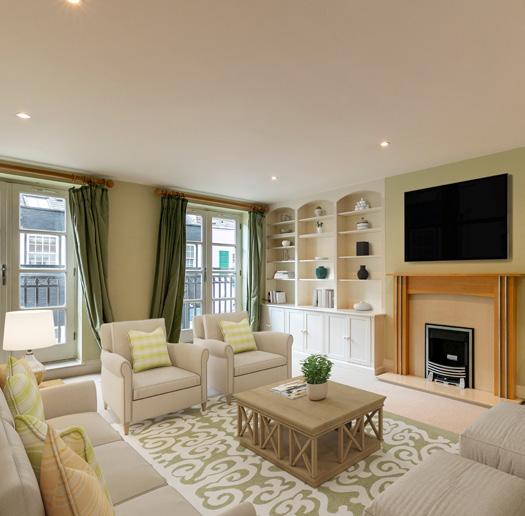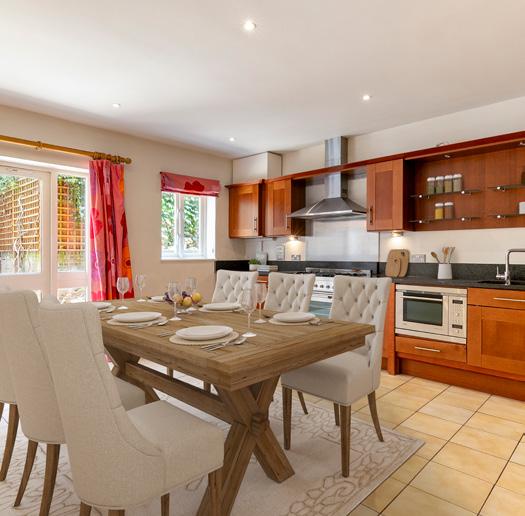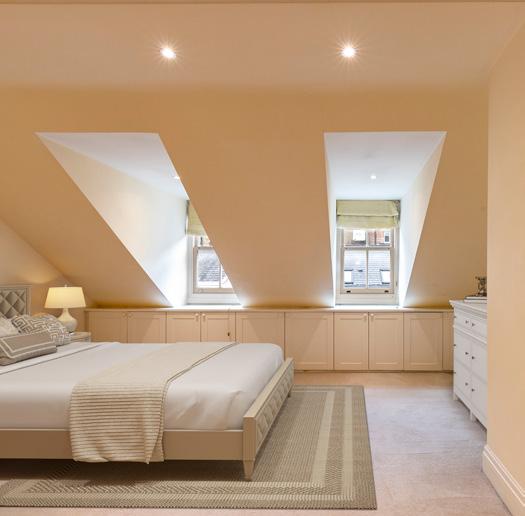




from Peggy Lurot, Managing Director
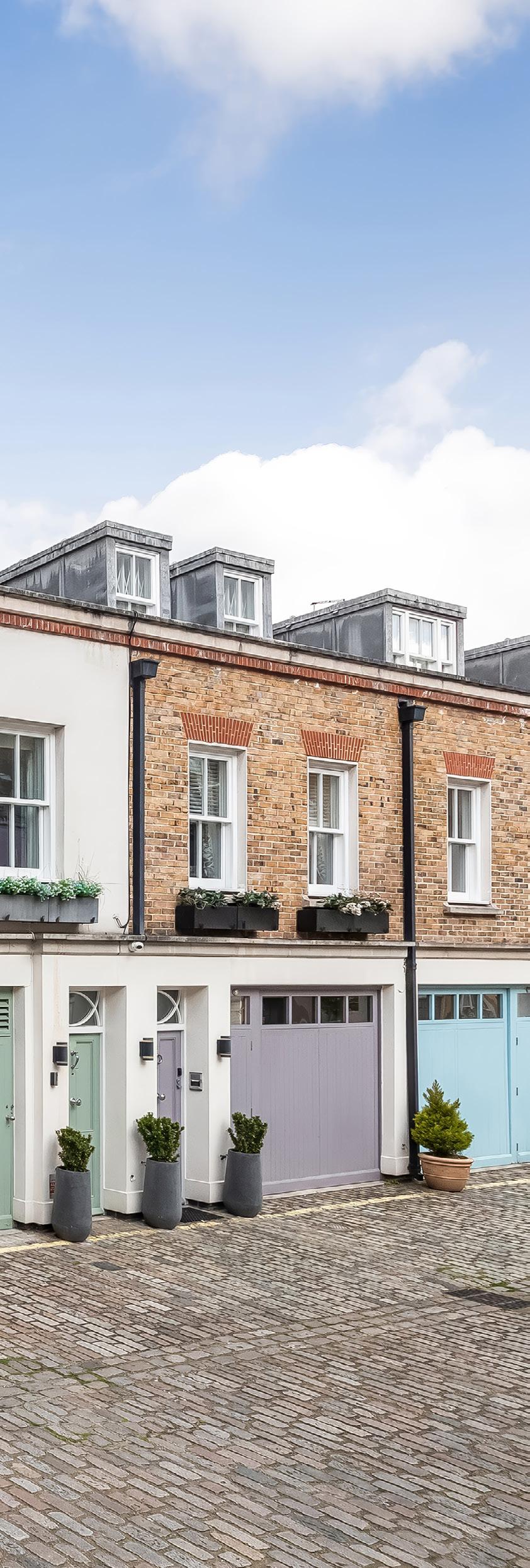
Edited by Amanda Sharpe
Welcome to the Summer edition of Mews News and the first with me at the helm of Lurot Brand. I’m both delighted and excited to have taken on the role of Managing Director. As Antoine and Kati Lurot’s daughter-in-law, this estate agency has a special place in my heart.
I’m not new to property. I grew up in the South of France where my parents owned three estate agencies, so it was inevitable that my career would start there. I’ve been involved in all aspects of the industry on both sides of the Channel – sales, lettings, management, business development and marketing. In fact, after working as a sales negotiator at Lurot Brand, I went on to start the company’s Marketing department.
The relationships Lurot Brand has developed and maintained with clients remain as important today as they did when I first joined. Our independence, passion and personal interactions are our strengths, along with local knowledge and appreciation for mews streets and homes. We understand it represents a unique property offering; one that will always attract buyers in search of timeless good looks and vibrant communities in London’s most desirable locations.
This latest edition of Mews News is more substantial than previous issues. We’ve enriched the content and interviews to provide you with an even greater celebration of the mews. From practical tips on managing your property and garden design ideas for your courtyard, to an insight into the life of one of our most esteemed clients, David Sears.
I hope you enjoy reading our latest edition of Mews News as much as we’ve enjoyed creating it.
Peggy Lurot Managing Director peggy@lurotbrand.co.uk

Our Managing Director reflects on Lurot Brand’s past 50 years & the plan for its future
As a seasoned property professional with years of experience in estate agency, what has drawn you to head up Lurot Brand at this stage in your career/life?
• As I’m sure everyone can relate to, life is full of unexpected twists and turns. Some things happen due to a plan, some out of necessity and some are just a matter of being in the right place at the right time. My return to Lurot Brand after a familyfocused hiatus was a bit of everything.
Sadly, the passing of our Chairman and Co-founder Antoine Lurot (my father-in-law) left a void that needed filling. Fortunately, my extensive experience as an estate agent, overseeing marketing and other crucial aspects of the industry, made me the natural choice to step in and take the lead. In addition, our boys are now grown up and eager to bring experience gained in their respective careers to our family business.
What do you believe makes a London mews property so special and loved by certain buyers?
• I instantly fell in love with mews streets upon discovering my first, Kynance Mews. Mews are beautiful, unique, and eclectic, providing residents with a tranquil escape from the noise and bustle of city life. Even after all these years, I continue to be amazed by what lies behind a mews door – from charmingly unconventional to surprisingly grand residences. It’s not just the houses though. Mews owners are often some of the most interesting individuals, thriving on the unique sense of community these London streets offer. Indeed, some mews resemble communal gardens, bustling with picnic benches, abundant barbecues, and memorable street festivities.
Does Lurot Brand have an ethos or a mantra that reflects the way it works on behalf of its clients and how it likes to do business each day, every day?
• Our ethos is that of a small, independent and personal business but one that punches well above its size! In this age of faceless corporate estate agencies where most buyers and sellers feel like they are ‘just another number’, we like
to make our clients feel like part of the ‘mews family’. Once you have bought or rented a Mews house, you are just at the beginning of your journey with Lurot Brand.
Previously, you established a marketing department at Lurot Brand, why do you believe this is important and how do you envisage taking this forward?
• As a specialist Mews agency, we’ve always strived to demonstrate innovation and a unique approach in our marketing efforts. The charm and village atmosphere of mews streets have consistently inspired us to think creatively, and we’ve developed and continue to implement original strategies aimed at fostering a closer ‘mews community’. For instance, our Mews News publication features insightful contributions from mews enthusiasts, residents, and businesses. Additionally, our annual Mews in Bloom competition garners a loyal and expanding following, with participants bonding over gardening, planting, and creating vibrant floral displays in their mews streets. We actively utilise social media to showcase the stories of mews and their surrounding areas, promoting these beautiful, hidden streets worldwide. We’re enthusiastic about upcoming projects that will further underscore our passion and expertise in all things mews, reinforcing our commitment to delivering top-quality service to our clients.
What is the secret to Lurot Brand’s success being around for 50 years and what is your vision for the next 50 years?
• We are committed to the long term. For many clients, we have managed their properties across generations, not just seeking quick deals but offering advice based on their enduring needs. These principles, rooted in trust, form the bedrock of our client relationships. Through numerous market fluctuations, we have consistently supported our clients with unwavering professionalism and values. Central to our success for over half a century, is our personal and independent service. It has always been about the people; our colleagues and clients have made this journey incredibly meaningful.
We aim to continue in this spirit, honouring the legacy of our founders, Antoine and Kati Lurot, by serving London’s beautiful mews and their residents. Our commitment to authenticity, honesty, and agility in responding to market conditions will ensure that Lurot Brand thrives for many more years to come.
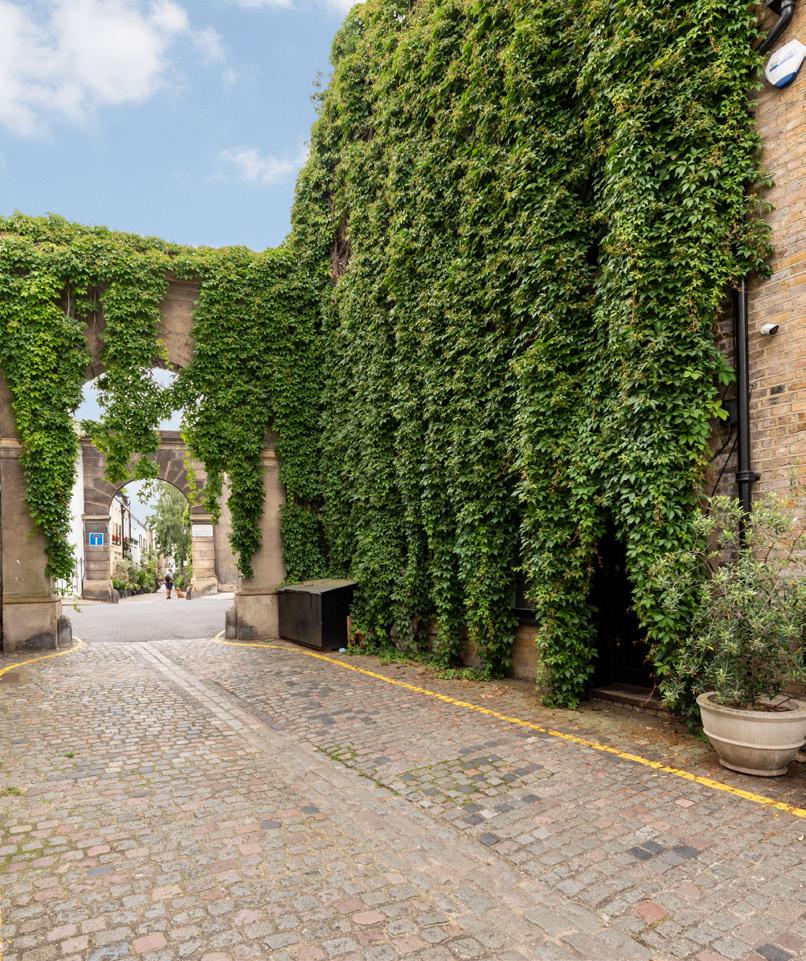
Peggy’s favourite street in London: Kynance Mews
What challenges do you consider an independent agency business in a highly competitive PCL environment faces and how do you plan to tackle or adapt to these challenges?
• I firmly believe that estate agents in the UK rank among the finest globally, with today’s independent agencies standing out as exemplary. Our primary goal is continuous improvement.
Until recently, large corporate agencies held significant sway, but over the past decade, sellers and landlords have increasingly favoured a more personalised service and greater local expertise. In the Mews market, we are a prominent player in a smaller arena and recognise the importance of preserving the values of an independent, family-run business.
From political changes to property prices, here’s why we all need a reality check in the coming weeks…
BY ZOE DARE HALL
Property Freelance Journalist of the Year 2021, International Property Journalist of the Year 2021, Lifestyle & Interiors Journalist of the Year 2021 (Property Press Awards)
Most political pundits, members of the public and – surely, if only secretly –Tories feel the country’s forthcoming General Election’s outcome is a done deal. Until then though, and with the spectre of 2016’s Referendum outcome still looming over us, we are all braced for last minute shocks.
What is it all doing to the frayed nerves of people wanting to buy, sell or rent a home in the coming weeks and months? Well, of course, the uncertainty doesn’t help, it never does in property markets. But from the moment the election date was set, it helped to quell nerves. “We have spoken to many buyers about the upcoming election,” says Cameron Power, Senior Sales Associate at Lurot Brand. “People have been quite uncertain about making plans for their future and now that the election has been called, they feel more confident and can start making some of the life decisions they have been putting off”.
“For us, this means more enquiries on our existing stock and more requests for appraisals”, adds Laura Rogers, Office Manager at Lurot Brand. “It also helps that most people believe they know what the results will be, which cuts through some of the uncertainty”.
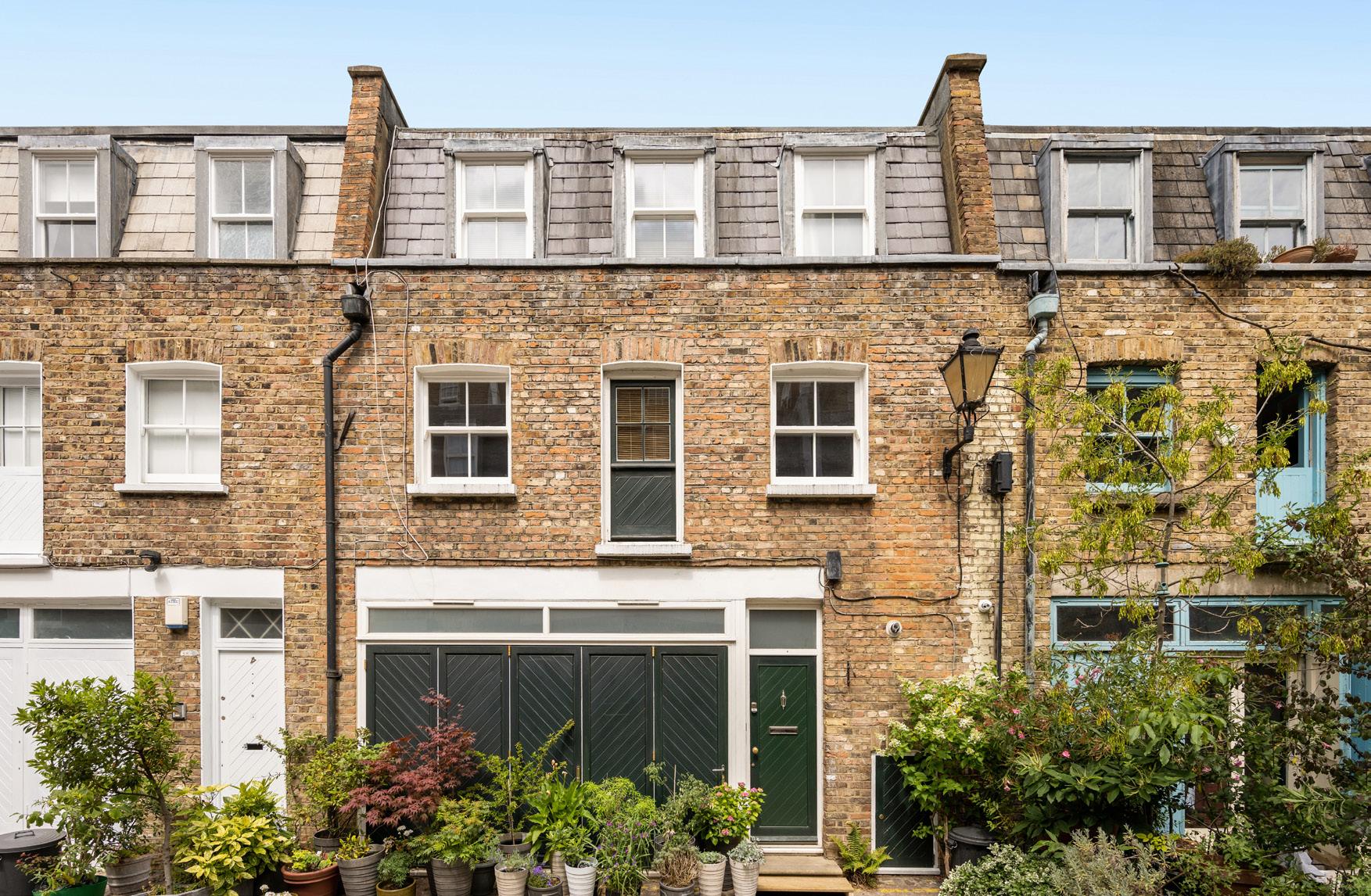
Suffice to say, Lurot Brand has definitely seen an increase in activity since the election was called. “Yesterday we received four offers,” says Power, referring to the final week in May. “People view the election as a foregone conclusion and are keen to finalise deals now rather than wait. They’ve already delayed moves due to rising interest rates, and despite the pandemic and global conflicts affecting enquiries in the past, we haven’t seen the same impact with the election”.
“This is very much a buyers’ market. For vendors or landlords to walk away with the best possible outcome, they would be advised to do something counter-intuitive by considering a price reduction”
- Cameron Power
It’s a valuable piece of advice to those looking to sell their property. “It takes nerves of steel, but you may just end up getting more than you wanted in the first place,” says Power, mentioning a two-bedroom flat in South Kensington, that had languished on the market for months with another agent before Lurot Brand took it on. The vendor reduced his price by £100,000, which lead to competing bidders pushing the final sales price in excess of the original asking price. “Bidding gives everyone involved proof of value, which is really important in an uncertain market,” comments Power.
Frankie Dickens, Lurot Brand’s Senior Lettings Associate, is seeing a similar scenario in the rentals market. A four-bed house was recently marketed “at a high price”, she says. “The owner reduced the amount and had three offers in a day. They ended up achieving £1,375 per week from competing bids, which was nearly their original asking price.”
At a time in which the nation’s political rhetoric becomes ever more far-fetched, a reality check is needed for anyone wanting to sell or rent out their property right now. “Landlords are trying to secure as much money as they can as it’s now an expensive business and there are so many hoops to
jump through,” says Dickens, who is seeing many landlords selling up or moving back into their investment property. But reducing the price can play in their favour too - not least, adds Jonty Hall, also from Lurot Brand’s Lettings team, because tenants can often get carried away in a bidding situation.
Currently, the £800-£1,000 a week rental market is the most active, primarily attracting young professionals. However, landlords with well-priced properties in the catchment areas of sought-after schools – such as the French Lycée in South Kensington, which is particularly popular with Lurot Brand’s clients, according to Dickens – are likely to see strong interest from families at this time of year.
“We are able to achieve our vendors the best value even against larger agents as we can articulate the unique benefits of mews houses. Additionally, our access to a specialised database enhances our ability to attract more targeted buyers”
- Frankie Dickens
The key now, is that properties need to be in excellent condition and realistically priced in order to attract a buyer or tenant. Buyers in general are currently cautious because they have numerous options, and there isn’t intense competition from other interested parties, pushing them to rush their decisions.
“Everyone is looking to get a good deal, but once they’ve committed, they’re really in,” says Power, “and in uncertain times, in politics or property, people seek voices of clarity and reason”.
However, it’s the agents who possess a deep understanding of the intricacies of their specific market who will truly deliver on their promises.
“We are often up against other agents who overprice properties to win business,” says Power. “We’re the experts in the mews sector, we give realistic valuations, and we sell those houses.”

The Judith Blacklock Flower School is located in an idyllic Knightsbridge mews, where for 25 years, Judith has been creating, developing and teaching her accredited floristry courses. Judith and her small, experienced and friendly team offer an opportunity to learn specialist skills and techniques in a supportive, joyous environment.
Students from around the world can choose to attend an in-school course or enrol and participate online. Understanding that for some attending a course in London is not practical, Judith created online courses to make distance learning possible. This online curriculum includes the Accredited Online Floral Design Diploma, aimed at those wishing to master the skills and techniques of the floristry business and is closely aligned to her school’s world-renowned Professional Business of Floristry & Events Styling Course.

Here Judith gives us a little insight into how she fell in love with flowers and why she wouldn’t swap her mews for anything else in the world.
How long have you run your business from a mews and how did you come to be there?
• I have been in Kinnerton Place South for 25 years. I was approached by the previous occupant and nearly said no, but the location was so desirable I had to say yes!
• Originally I am from Cumbria, but I spent 12 years abroad. For the last four years, I have been living happily in Barnes SW13.
What was it like starting a business from a mews? Were there other businesses around and was/is there a sense of local business community among local independents?
• There is no traffic in the mews which is a huge advantage. My mews is calm and quiet, a place of beauty with kind and lovely neighbours who look after each other – exactly the way the world should be. We help each other, we take in parcels and we look after neighbour’s property
when they are away. There is a thriving community in Belgravia second to none.
When and how did your passion for flowers begin?
• At the time I did not realise that my passion for flowers stemmed from my mother. I was immersed in it from an early age, however my job at RHS Chelsea Flower in my early 20s, was carrying buckets. I vowed then and there never to do anything with flowers! However, upon returning after several years living abroad, I realised my deep passion for the natural world and found my path, eventually leading me to a mews in Knightsbridge.
Where do you get inspiration from in London?
• I feel most fortunate to live in Barnes with its generous green spaces. I don’t have the best or most expensive house in the neighbourhood, but I do have a garden I am proud of. My inspiration for my garden comes from all over the world. There is nothing I like more than visiting the great hotels in Knightsbridge, Mayfair and Belgravia and seeing their floral displays. Even after so many years in the floristry business, I find myself still learning from them today.
Are there any current trends for flower arrangements including colour, shape, and style with London homeowners hosting summer parties, luncheons, and events this year?
• Yes, there are – people are favouring a loose style with lots of foliage. Flowers in a vase always wins for me - and if there is one single tip to share- ensure that your vase is about half the height of your flowers. People tend to buy vases that are too tall and blame themselves for not making the perfect arrangement.
What are the most important things to consider when choosing flowers and foliage for an arrangement in a mews house with smaller proportions or a traditional London townhouse?
• When combining flowers, start with a round flower of a size and colour you like. For example, for a large townhouse, one can go for bigger blooms such as sunflowers or hydrangea, and for smaller mews homes, choose roses, scabious, cosmos or dahlia. Add a spray flower such as gypsophila, solidago or alchemilla (Queen Ann’s lace) and then follow with other flowers of choice. As a simple guide on scale, make sure that no flower is more than twice the size of the one next to it.
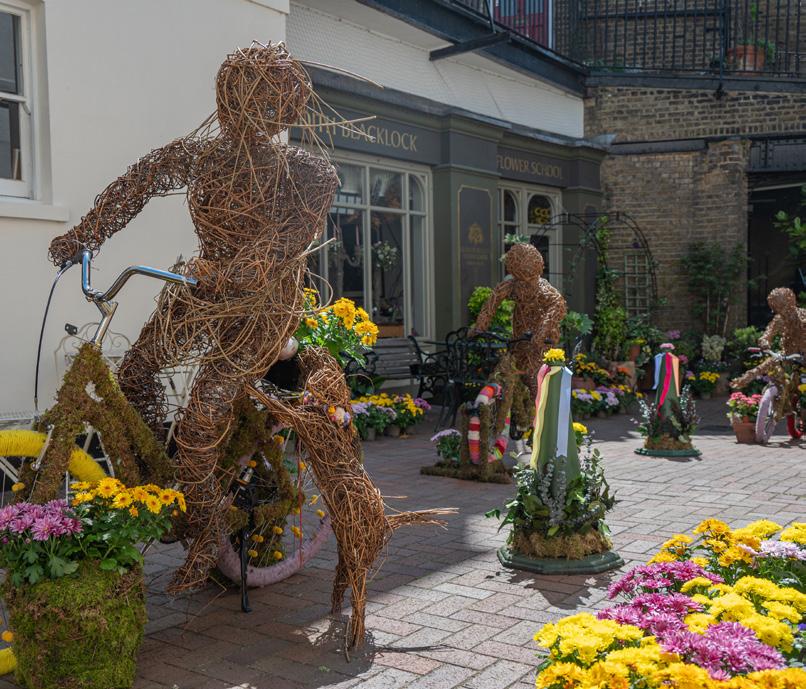
Best blooming ideas for bringing the front of your mews to life and showing it off to the full?
• Go for many flowers and herbs with spring bulbs. A variegated golden holly, such as Ilex acquifolium ‘Golden Queen’ or Ilex x altaclerensis ‘Golden King’, brings happiness to the garden on bleak winter days. Viburnum tinus is another easy-going shrub that produces delicate white and pink flowers in the winter months, followed by black berries in January. Avoid box as it has too many problems at the moment that can be difficult to deal with. Muscari (grape hyacinth), Galanthus (snowdrop) and Narcissus are perfect early flowering spring bulbs. Tulips are a must for pops of colour, flowering a little later in the year.
In the summer, window boxes are a popular choice, raising the level of planting and providing vibrancy to the house. Bedding plants and herbs can be purchased from supermarkets or garden centres, and you should buy them when they are six or nine to the tray rather than individually sold – they cost surprisingly less if you do! When buying herbs from the supermarket, divide the roots many times and plant out. They will grow and provide taste and fragrance until the frosts arrive. Leaving the plants in the pot means the roots are compacted and do not fare well. Late summer and into the autumn, the absolute essential are dahlias. Plant now. They will produce gorgeous blooms from now until November – they need virtually no care but do need a bit of sun.
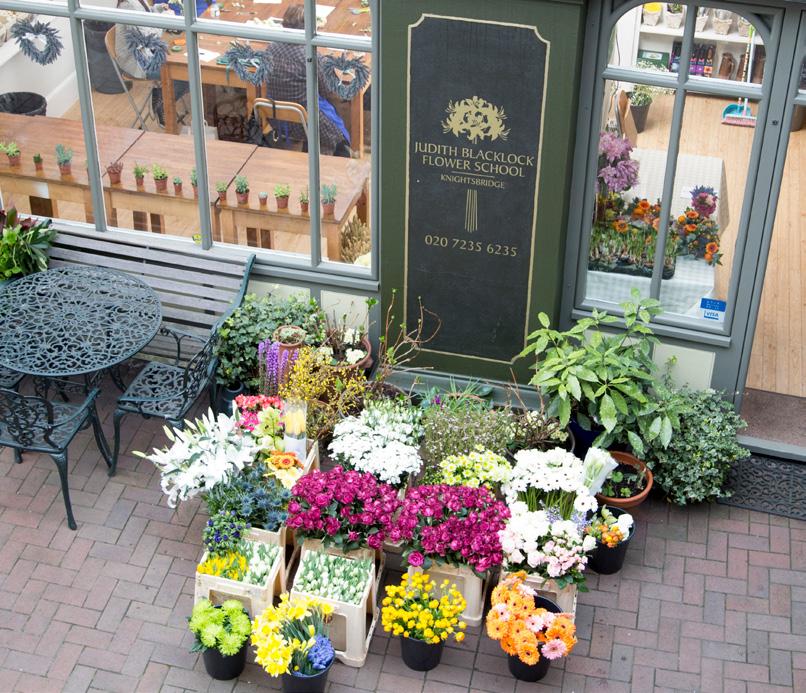
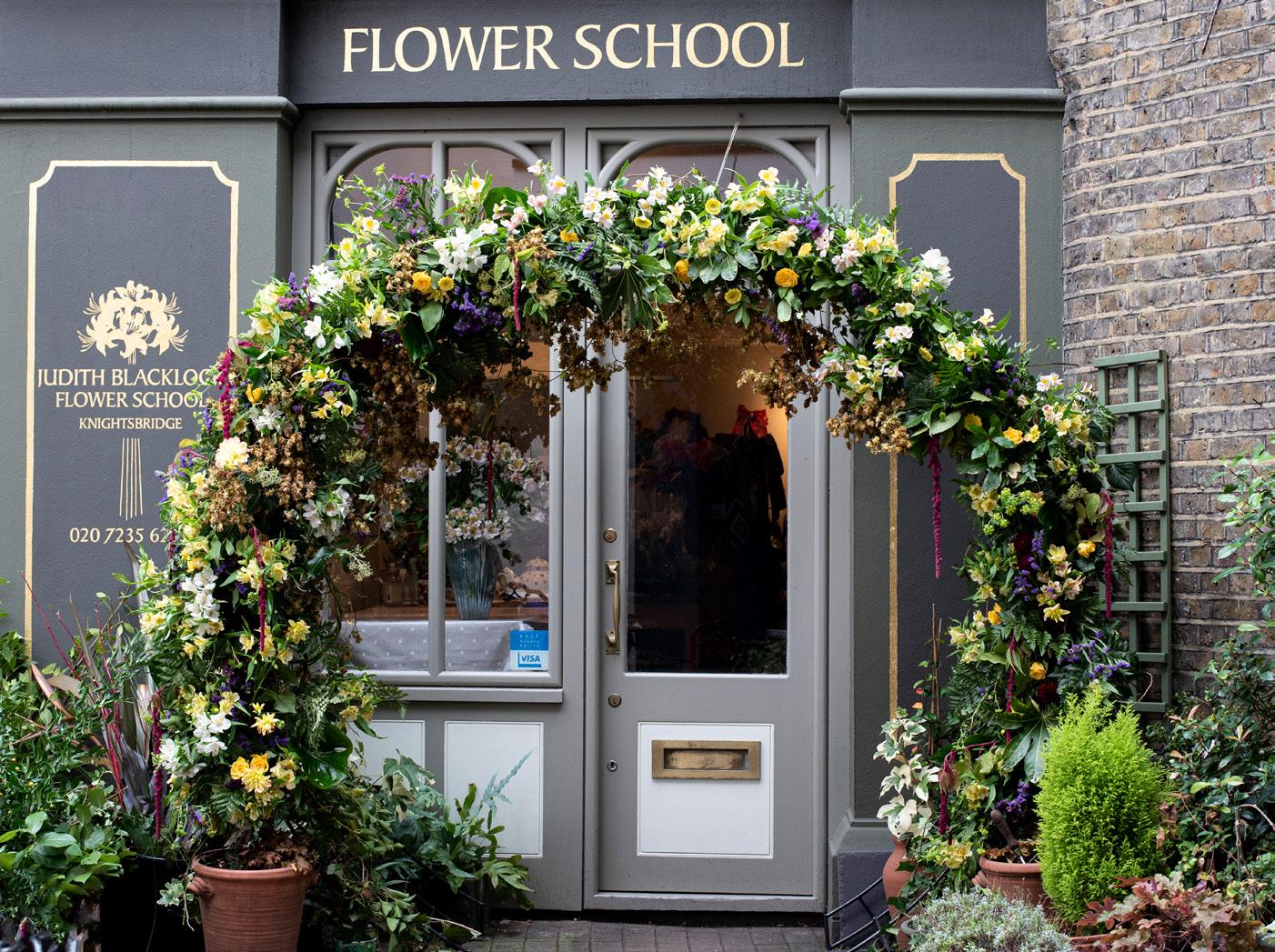
What are your all-time favourite blooms in the summer?
• Hydrangea, cosmos, sweet peas and runner bean flowers!
Photos: Judith Blacklock www.judithblacklock.com
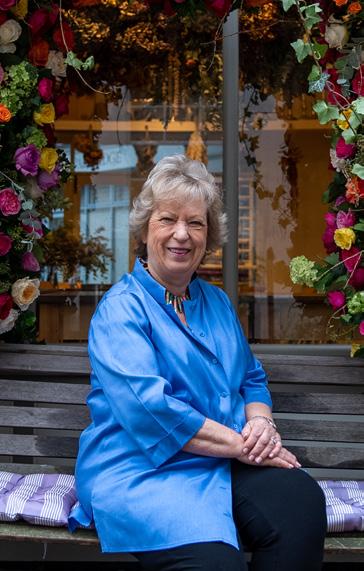
What’s the best thing about having a business in London mews?
• There is simply nowhere better - the charm, the calm and the beauty. I have the best address not only in London but the country. Other mews addresses come a close second - I am a devotee!
www.judithblacklock.com
Judith’s credentials are boundless as is her passion and enthusiasm for her craft and for encouraging others to find confidence and joy in the art of flower arranging. She is a Fellow of the Horticultural Institute, the author of over 18 best-selling books, has organised the largest contemporary cut-flower events ever staged in the UK, created numerous bouquets for the Royal Family, provided expertise at prominent venues, including Kensington Palace, is a design consultant to several large corporate companies, and has appeared regularly on television, teaching flower arranging to celebrities from Kirstie Allsopp to Gordon Ramsay.
Lurot Brand’s creative duo Laura Rogers & Frankie Dickens offer a collection of top tips to turn your mews courtyard into a summer haven
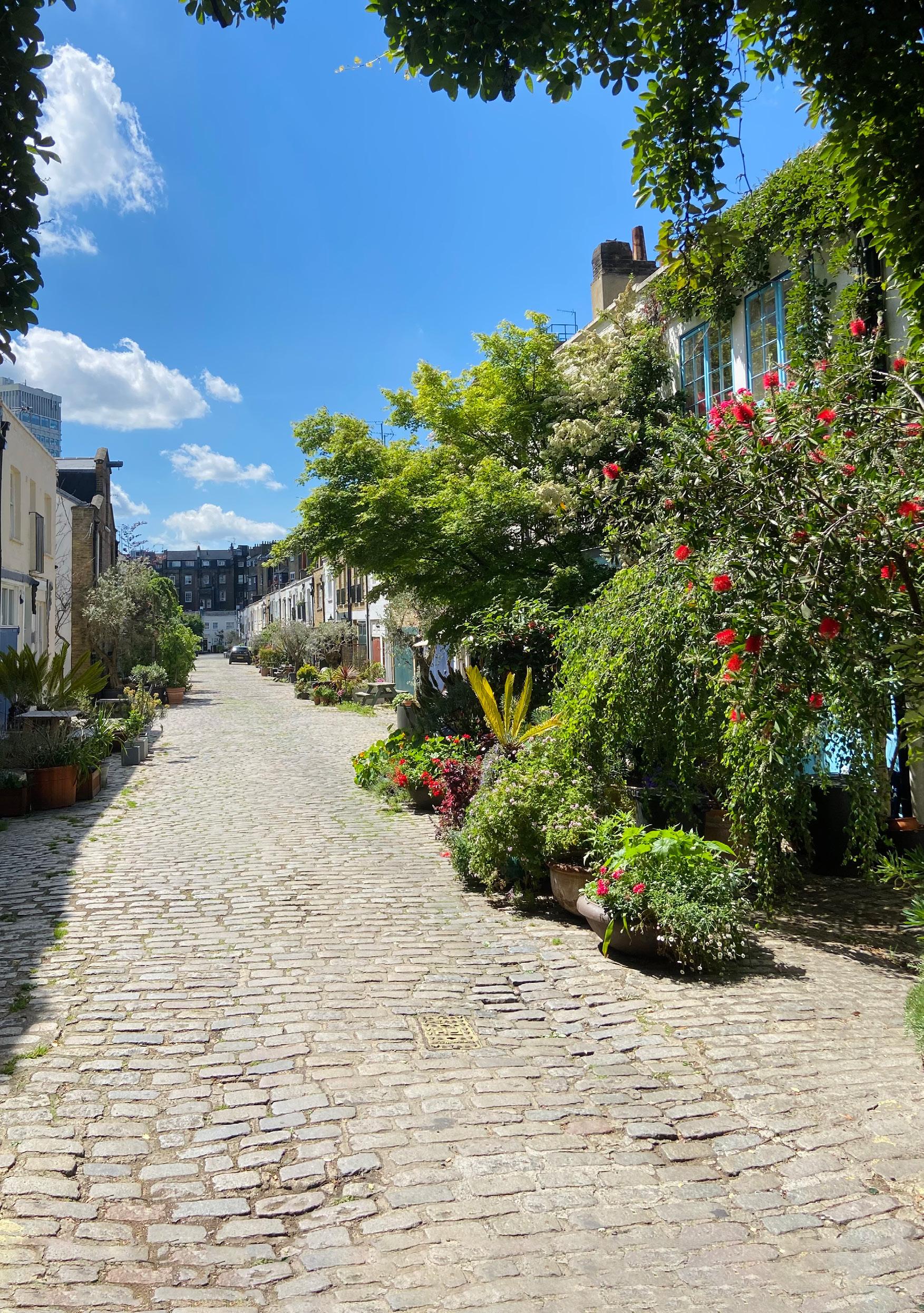
What clever design advice would you recommend when your courtyard is surrounded by hard surfaces, tall buildings, neighbours, or high walls?
• Consider vertical planting that will create a relaxing garden atmosphere; add interest to divert the eye, without sacrificing the space you have.
• Incorporate wall shrubs to grow as climbing plants, because these will soften hard surfaces like concrete or brick and create some dappled shade, plus help with soundproofing.
• Evergreen climbers, whether planted in the ground or in planters, will create year-round foliage cover and attractive focal points within a courtyard space.
• By cleverly adding wooden slats or timber to clad and disguise concrete, brick or high walls, it will add a contemporary feel and natural design twist to transform the feel of that space.
How can you draw the eye in to a focal feature in a courtyard using architectural plants, a water feature, sculpture, wall art, or mirrors?
• A small courtyard can always benefit by creating the illusion of more space. To do this, adding a decorative wall mirror works well – not only will it trick the eye into thinking you have more plants, but it will give a feeling of more space and reflective light.
• Experimenting creatively with wall art or sourcing vintage pieces can instantly add something unique to your outside space and create a great talking point between guests.
• A focal point can be any feature that stands out and immediately draws you in. If there is not enough space for a water feature or sculpture, then create a stylish seating area using tactile materials and beautifully designed furniture.
• Architectural looking plants are a wonderful addition to any space. Just because your courtyard is not large does not mean you cannot play with scale by adding unusual structural plants for drama in your garden.
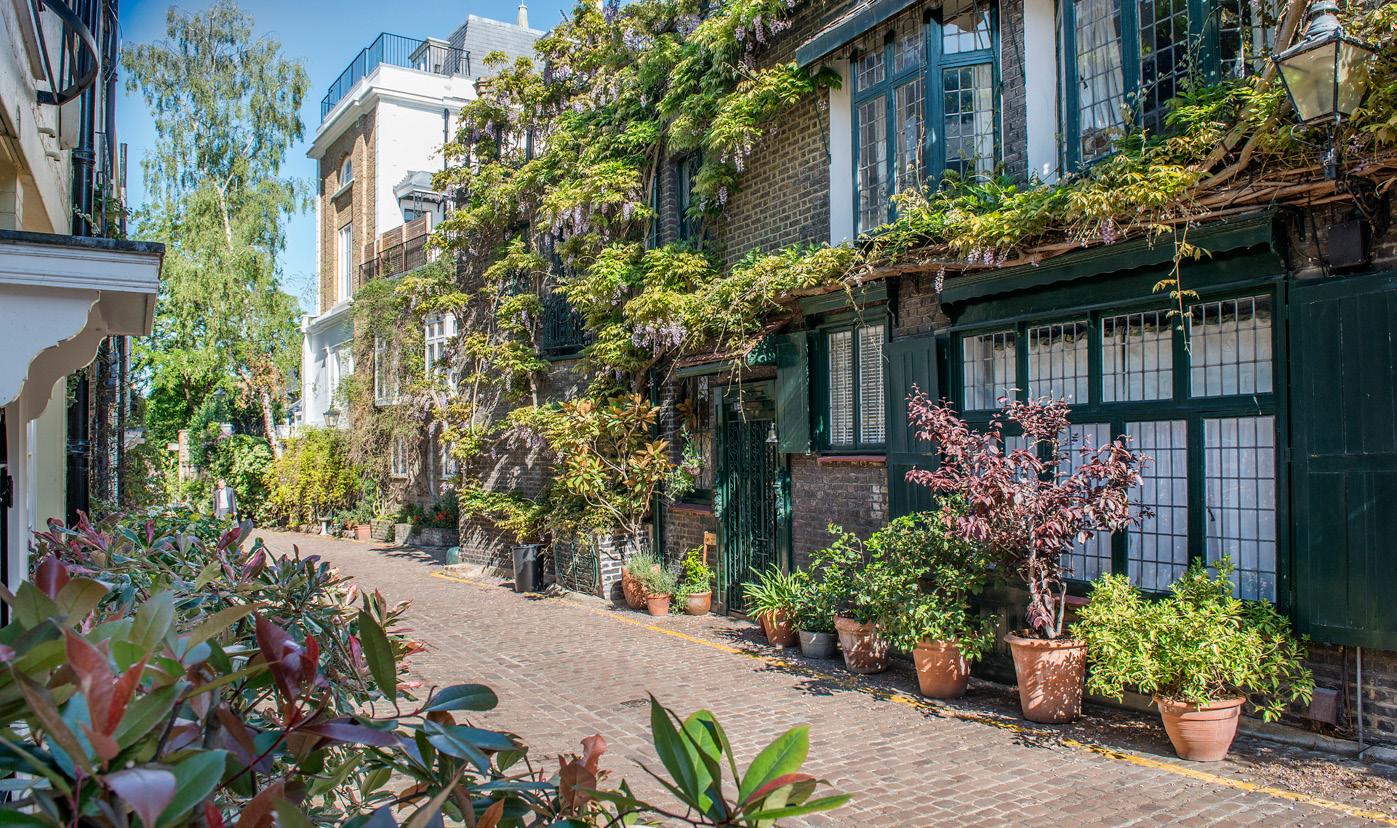
How do you create outdoor storage space that is both practical and attractive in a courtyard?
• Storage space is always useful to stow away outdoor rugs, cushions, and decorative accessories. Nowadays, there are a variety of outdoor furniture styles that offer built-in storage. There’s always the option of having a local carpenter create bespoke shelving, benches and containers that are both practical, attractive and blend into your chosen style providing a practical solution to store garden and outdoor items.
How to choose plants, containers, colours, and materials to create a cohesive scheme that links the outside with the indoor space?
• A good approach is to try and create a connection and link between the outside and the interior of your main living space, whether it’s picking up on a colour palette, texture, materials, the design or shape of furniture. Creating a good flow between inside and outside will make your home feel larger and harmonious, especially with a courtyard leading directly off your living area.
• The trend for indoor/outdoor living is very fashionable – you may echo the choice indoors of cushions, rugs, furniture style, and lighting with similar features in the garden.
• Most courtyard gardens are likely to be overshadowed by tall buildings – choose plants that thrive in the shade, add different textures, height, structure and colour, or opt for a pared down green palette from dark to light.
Tricks and hacks to create an illusion of flow and space in a courtyard area?
• Vertical planting doesn’t take over or encroach on what is usually a small area.
• The addition of al fresco dining (a firepit for example) can connect the indoors with the outdoors, creating a relationship between the two separate spaces.
• For wine lovers, why not try growing a vine? There are so many varieties and they are surprisingly easy to look after – imagine serving cheese with your homegrown grape harvest!
What’s hot and trending in the courtyard this summer – maybe pizza ovens or smokeless firepits?
• Firepits have been popular for several years and pizza ovens are now a big trend. With the British climate, it gets cooler later in the evenings, but a solo smokeless firepit takes the chill off and keeps everyone outdoors for longer - and what better way to enjoy being outside than sharing homemade pizza with friends – summer entertaining made easy.
What do mews owners love most about their outdoor street space and sharing it with the community?
• Mews streets are incredibly social, with many having ‘whatsapp’ groups and arranging occasional drinks. The pandemic in 2020 really brought this to the fore when social distancing stopped family and friends gathering, but those living on a mews were able to chat with their neighbours from their front doors and maintain some degree of normal interaction. The communal mews space allows for everyone to put plants and benches in front of their houses and creates a sense of community and mutual respect in the mews.
• Regardless of size, to own a green space in a prime central London postcode, where most mews streets are found, is a real luxury and will always be considered a highly coveted asset.
With our helpful tips to transform your courtyard garden into a floral oasis, you might be in with a chance of winning our annual ‘Mews in Bloom’ competition. Keep an eye out for next year’s entry date and prepare to showcase your blooming masterpiece!

Laura Rogers
Office Manager laura@lurotbrand.co.uk 020 7590 2520
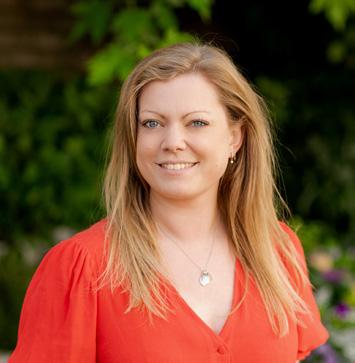
Frankie Dickens
Senior Lettings Associate frankie@lurotbrand.co.uk 020 7479 1975
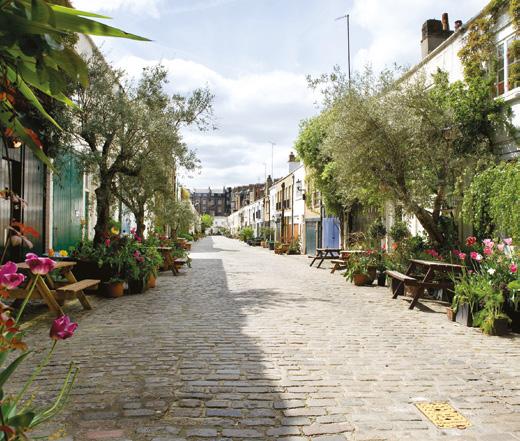
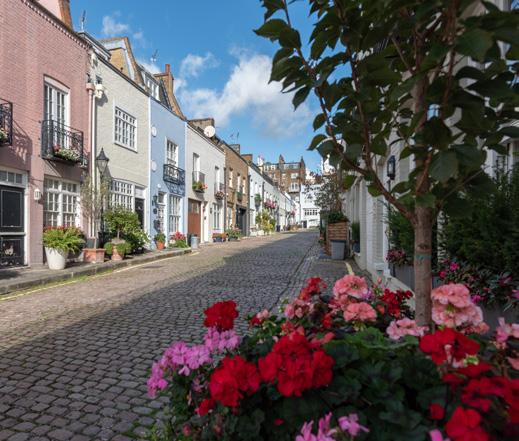

Dawn Sparks from Lurot Brand’s
Property Management Team runs through A SUMMER CHECKLIST FOR LANDLORDS TO KEEP TENANTS HAPPY & THEIR MEWS HOUSES AT THEIR BEST
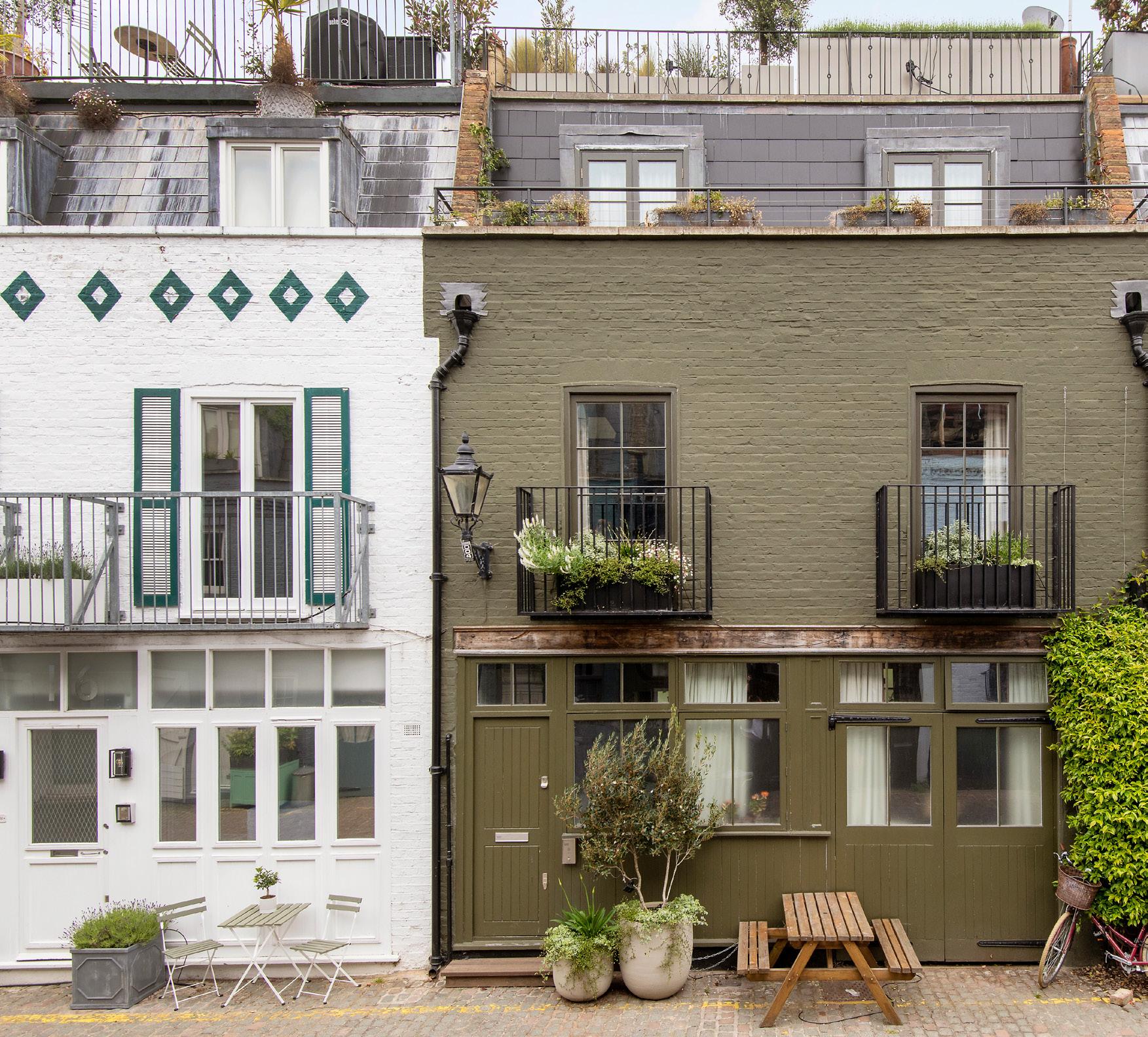
We may not associate London with soaring temperatures or the scorching heat of the Mediterranean during the summer months, but as our climate changes, we are experiencing sudden spikes with some extreme weather from torrential rain to a sustained heatwave. Beautiful as it is in summertime, London can get a little sticky in the heat and when temperatures rise outside, it’s important to make an indoor space as comfortable as possible. At the same time, direct sunlight can impact exteriors causing paint to fade and flake, and doors and windows to weather.

Dawn Sparks Head of Property Management dawn@lurotbrand.co.uk
020 7479 1972

New London developments are built with air conditioning as standard and the ability to control everything via your mobile device or iPad. In period and traditional mews homes, we are finding owners and landlords are also installing air conditioning and cooling technology, whether it’s an integrated system or freestanding unit, to ensure their properties can be regulated and not end up unbearably hot inside.
Incorporating this home technology applies equally to landlords; it will certainly benefit their rental investment by providing tenants with the latest features and home comforts. Having spent money on installing air conditioning, it’s important that a landlord or the property management company looking after the property ensures that any cooling system, such as fans or air-conditioning units are serviced and well-maintained before the onset of summer. Regular cleaning or replacement of air filters is essential to keep these systems running efficiently. Additionally, installing programmable thermostats can help regulate indoor temperatures more effectively, ensuring a comfortable living environment for tenants throughout the summer season.
Maximising a mews house’s natural ventilation and air flow will help to keep it cool and comfortable during the hotter
summer months and reduce the reliance on artificial cooling systems. The simplest method is to open windows strategically allowing for cross-ventilation and drawing in fresh air from multiple directions. Installing window treatments such as blinds or shades helps block direct sunlight during the hottest parts of the day – while still allowing airflow – contributing to a more pleasant, indoor environment and assisting with privacy.
Aside from bringing your mews home into the 21st century with modern technology, one of the most desirable aspects of a traditional mews house is their historic provenance, timeless appeal and architectural design. Many mews homes boast original period features internally and externally – including Georgian sash windows, paneling, exposed brickwork, and oak beans. They often sit on cobbled streets some with decorative arched entrances, or stable doors dating back to their equine heritage.
To own one of these quintessentially English mews properties is both a privilege and a responsibility. As anyone who has ever lived in a period home will know, regular maintenance and close attention to upkeep and restoration in line with their age is essential. This can be expensive because works and repairs must be undertaken sympathetically to respect the fabric, original age and heritage of the
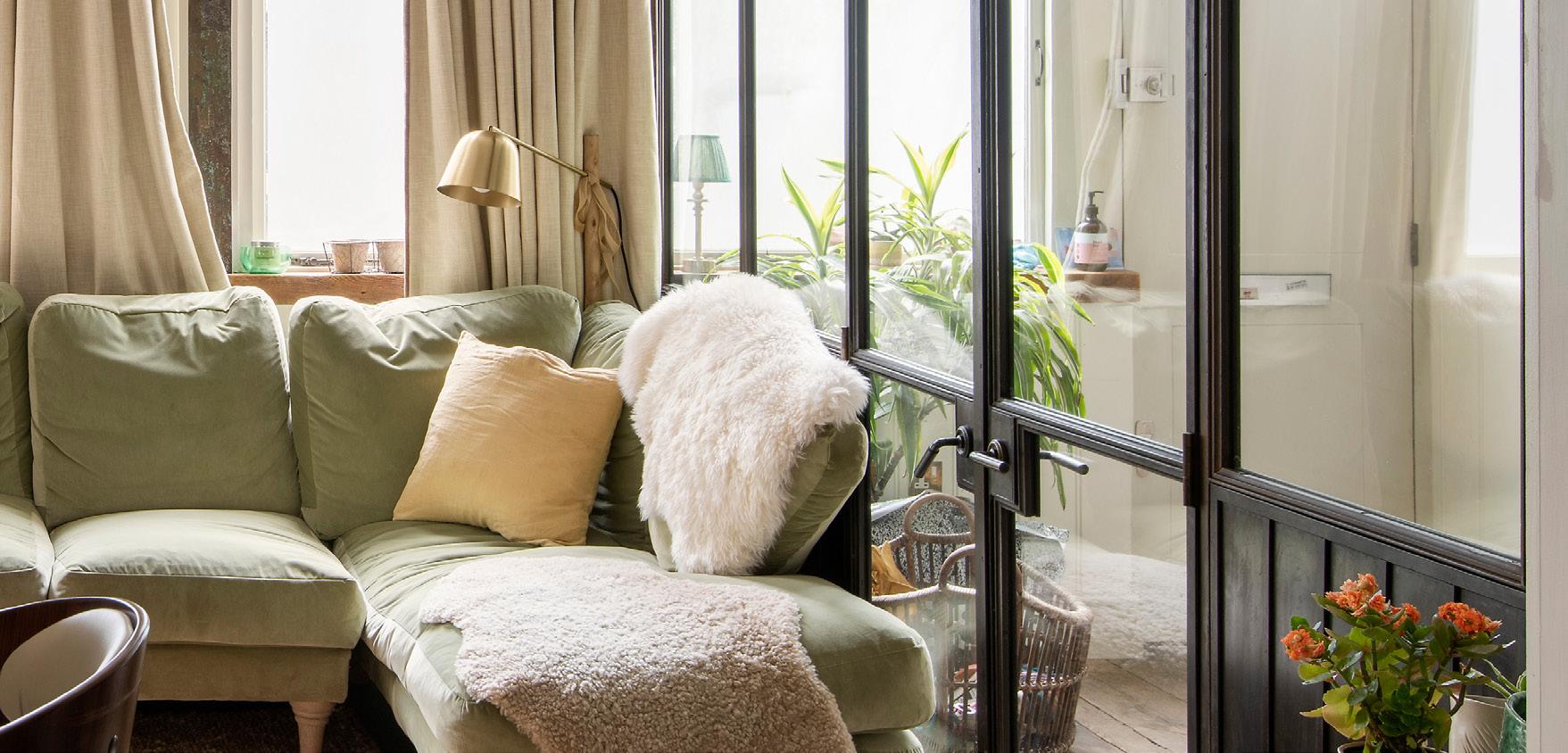
mews. Fortunately for landlords and owners, specialist advice about the correct materials and method of restoration can be sourced from architects, historians, mews surveyors, and if your mews is a listed building, from your local council’s listed building officer.
Summer holidays and travel plans may mean leaving your home unoccupied temporarily, making it a potential target for burglaries or break-ins. In advance of going away, try to assess and prioritise your property’s security by having a qualified locksmith install suitable robust locks on doors and windows. It’s worth consulting with a security firm about investing in a monitored security system for added peace of mind for you and your tenants.
Remember to notify your neighbours whom you know and can rely on, which is fortunately quite easy when living in a sociable mews. It is also sensible to inform property managers of your absence, as well as arranging for someone to collect mail or packages to avoid signaling that a property is empty and unattended.
Not only will you be helping the planet by reducing the environmental impact, but making your home as energy efficient as possible will mean lower utility bills for mews residents.
Simple steps such as switching to energyefficient LED light bulbs and using smart home technology to automate lighting and cooling systems can make a significant difference. Additionally, investing in renewable energy sources like solar panels further reduces the carbon footprint of mews houses, aligning with sustainability goals and promoting a greener lifestyle.
By leveraging the summer season to spruce up your London mews house, you can enhance its appeal, attract quality tenants, and maximise your investment potential. Whether you’re making cosmetic improvements to boost the exterior or investing in modern amenities to increase functionality and comfort, taking proactive steps to enhance your property will pay dividends in the long run.
Mews houses in London offer a unique blend of history, charm and contemporary living. By following this checklist and implementing some of these tips, residents can make the most of their mews houses during the summer season. The investment you undertake now, whether it’s preserving the building’s historic integrity, installing new home technology or committing to energy-efficient practices, will provide comfort, security, and sustainability for years to come.
Following on from the previous articles, Martyn John Brown in conjunction with Sean Pringuer-James of PJCE, a highly experienced basement engineer, provide a practitioner’s perspective about the excavation process involved to create a Mews basement.
If you are a resident in London, you might have heard stories about homeowners who embarked on major ‘digging down’ projects. Nicknamed ‘Iceberg Houses’ because of the mystery underneath, many Mews owners, under expert guidance and using teams of experienced contractors, have successfully navigated the excavation process. They’ve created amazing basement spaces that include media rooms, gyms, kitchens, and workspaces, adding square footage and value.
THE DREAM: Who wouldn’t welcome such ambitious development in the Mews?

In 2010, there were 180 planning applications for basements in the Royal Borough of Kensington and Chelsea, increasing to nearly 400, but by 2020 this reduced by over half. Much of the frustration about Mews development is in the development process rather than the construction phase. Basement projects can pose problems regarding party wall legislation because they are a relatively modern trend. From a neighbour’s perspective, development risks should be assessed and surveyors consulted to mitigate risk through insurance provisions with financial guarantees for the works.
Placing some of the developer’s funds into secure escrow accounts can cover the possibility of the development failing. This allows others to complete the work and ensure the site is safe if either the developer or the contractor fails to finish.
Construction of basements under existing buildings is a slow disruptive process as it involves large quantities of bulk excavation from site, and access for the delivery of materials and equipment, which needs to be managed carefully where Mews are narrow with limited access.
Each basement plan is unique and must recognise the special and unique factors that apply to each case; generic basement designs are not appropriate. Generally, planners will now disallow a basement exceeding 50% of the garden (admittedly rare in the case of a Mews), but each application will be case-specific and needs to be accompanied by comprehensive supporting documents.
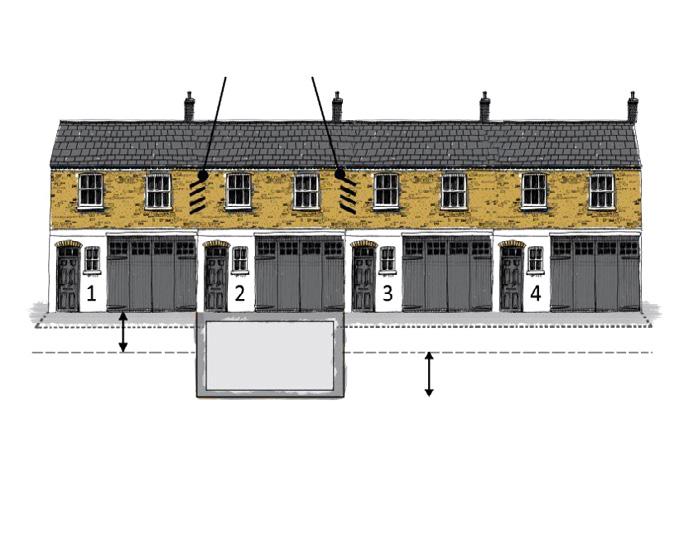
THE REALITY: If the new basement is more stable than the foundations of the adjoining Mews, it can result in differential settlement cracking as shown above.
Planners and other decision-makers are known to scrutinise basement applications extremely thoroughly, and while it does slow down the process, it ensures developments become more viable for both Mews owners and their neighbours.
A high proportion of Mews are situated on one of London’s hereditary landed estates, including the Grosvenor, Cadogan, Howard De Walden and Portman. Anyone contemplating a basement project should contact the estate to see what developments they permit as landlords and under any management scheme. If your Mews is outside one of the estates, it’s prudent to check what is permitted on the local council’s planning portal.
‘THE
From a technical perspective, basement extensions present some challenges. When major structural works are planned, the biggest consideration will be how to support the hollowed-out remains of the property and the neighbours’ properties while allowing room for the builders to carry out the works safely and efficiently. The design of the temporary supports, props and struts is key to the works’ speed, efficiency and safety. The contractors’ approach will determine how commercially successful the build is as well as with the neighbours and their surveyors.
Traditional buildings rest lightly on the ground and are not anchored. When forming a basement, you will create a permanent and irreversible change to the ground conditions also impacting adjoining properties. Extensive site investigations are needed to determine the soil types and the groundwater effects underneath the Mews properties. In London, geological underpinning impacts the ground posing different problems. A Mews situated away from the river is most likely to be clay soil (cohesive soil) with nominal risk from ground water, but when closer to the river granular soil (non-cohesive soil), means ground water is a significant risk.
Granular soils allow free flow of ground water through the soil making it unstable during excavation. Advance ground stabilisation of the non-cohesive soils is usually undertaken by using a permeation grouting technique involving filling the pores of the granular soil, with a resin
LONDON’S SOILS: Sands and gravels near the River Thames and clay further away.

(usually polyurethane or acrylate) to bind the granular soils together and form a stabilised mass of self-supporting soil with vastly improved bearing capacity. With the resins being hydrophobic or hydrophilic, the permeation grouting also prevents water movement so excavation can progress safely. Neighbours to the new basement should be aware that the permeation grouting will be formed beneath the party wall to extend below their properties.
Underpinning is required to party walls, front and rear elevations creating the structural solution for the basement. It supports the axial loads from the structure above and also the lateral loads from the adjacent ground, ground water and any other imposed loads. Underpinning can be done as a mass concrete structure, but using reinforced concrete is preferable to minimise the extent of structure protruding into the new basement. Both solutions require party wall agreement and a party wall surveyor should ensure that these details are specified and agreed before the Party Wall Award is signed. The underpinning will be combined with a basement reinforced concrete slab as a horizontal prop. In the case of Mews properties, support needs to be given to party walls, originally consisting of masonry with simple corbelled brick foundations. How these connect to the new concrete basement structure is critical to the project’s success.
Mews houses as a property class in London offer a unique proposition; prevailing market conditions will determine the amount of value a basement adds to any property. In general, it is accepted that basement space costs at least twice that of above-ground construction. However, in high-value areas – specifically Prime Central London, where Mews populate many postcodes - construction cost is likely less than half the value of the created space.

SITE EXCAVATIONS: Digging out works can begin when the perimeter walls are underpinned and temporary support work is in place; the horizontal props shown above replace the ground floor which had braced the perimeter walls; the floor slab can then be broken out to allow the ground level to be reduced.
FURTHER ADVICE ABOUT LONDON MEWS

Everchanging Mews is owned and run by Martyn John Brown MRICS, MCIOB, MCABE, MARLA, MISVA of Everchanging Mews.
info@everchangingmews.com www.everchangingmews.com 0207 419 5033
Of PJCE provides engineering advice on all small and large projects. sean@pjce.com
1 Peggy Lurot joins the Lurot Brand team as Managing Director.
2
3
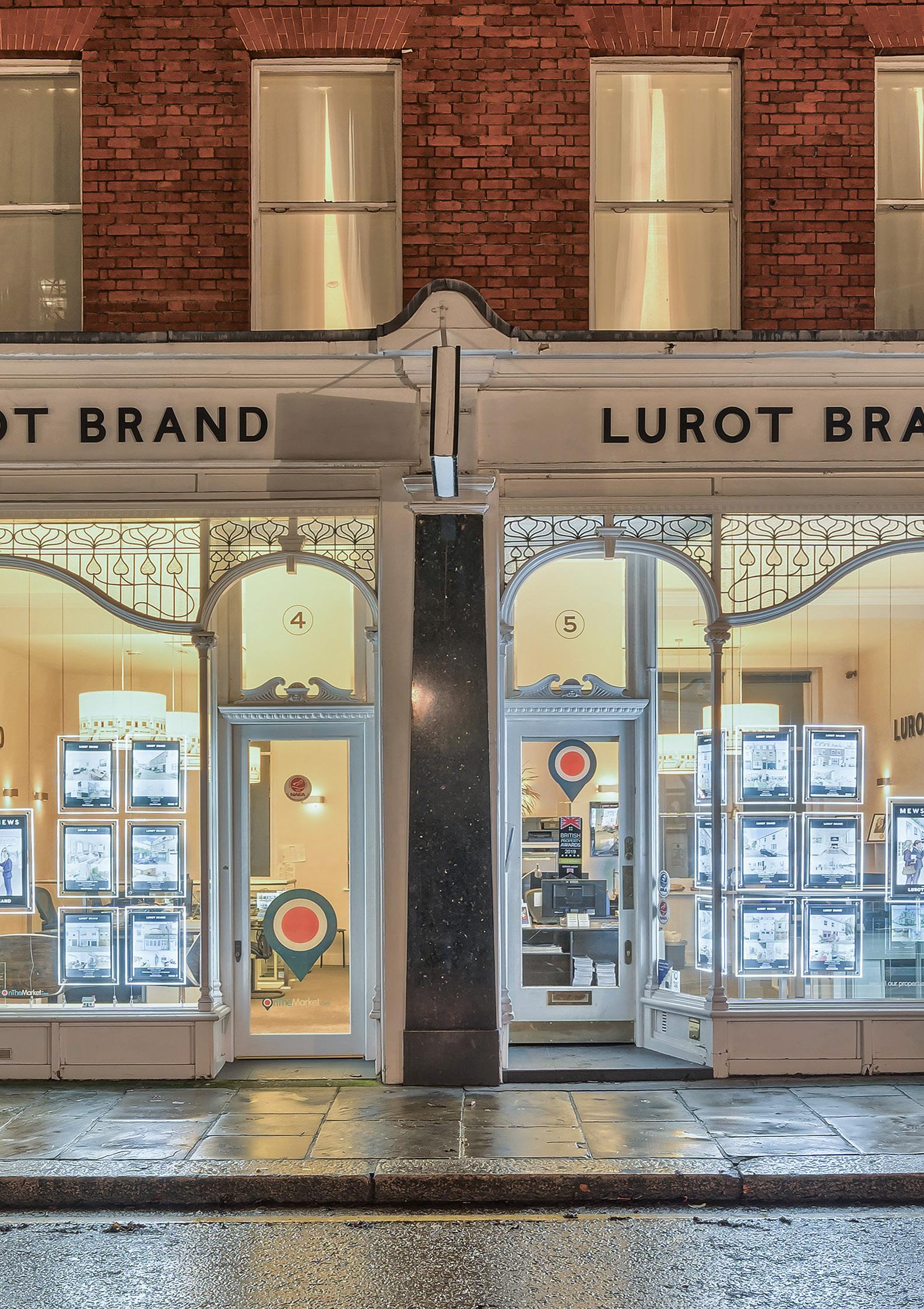
4
5
6
Kati Lurot, Chairman of Lurot Brand, is overseeing the redecoration of our Hyde Park office.
We extend a warm welcome to our new colleagues: Nina has joined as Lettings Lister & Compliance Officer and Mike Lurot has joined as Sales Associate.
We’re sorry to see our colleague Benjamin leave Lurot Brand, but we wish him the best of luck in his future endeavours!
A massive congratulations to Mike Lurot, our new Sales Associate, who just got married!
It’s been a busy few months for the Sales department following the announcement of the UK election, with many properties going under offer, both north & south of Hyde Park.
7 The Lettings department is delighted to announce that properties listed with Lurot Brand have been successfully rented within just few days!


David Sears is one of those people you hope to find next to you on a long-haul flight (and you might do, because at one time, he racked up one million air miles every four years). He is an unassuming raconteur and a former race driver - the Sears dynasty has been involved in motor racing for nearly 100 years and spans four generations. As well as being a mews lover for over two decades, he is also a successful investor, businessman and has recently launched his new CityCar in London.
In this one-to-one, we talk to David and find out more about the man behind the wheel, his love for all things mews and the drive to bring Move International CityCars to London.
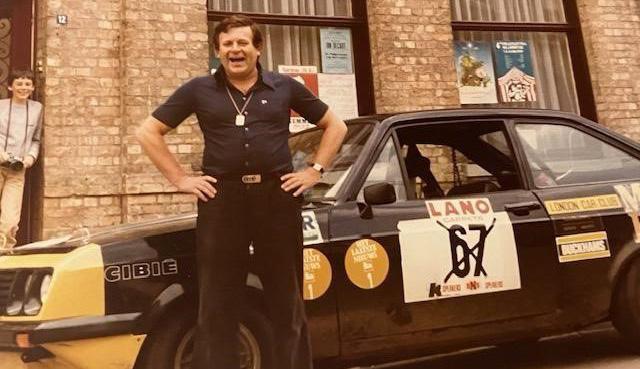
How did your first connection with Lurot Brand and mews houses begin?
• I first met Antoine Lurot over 25 years ago when I bought my first mews house through Lurot Brand in Rutland Mews South, Knightsbridge. We bonded over our shared passion for racing cars and motorbikes and since then, I’ve continued to buy and invest in mews properties. Currently I own three South Kensington houses in Manson Mews, Colbert Mews and Petersham Mews.
• I actually live in a flat on the King’s Road, but I continue to invest in mews properties. My affection for mews really started when I was at school in Surrey and my parents lived on a farm in Norfolk. It was too far to go home for every holiday and London was closer, so I would stay at my best friend’s mews house in Petersham Mews. I remember thinking, “These are so pretty and quiet. It feels like I’m not living in busy central London at all!” As a 19-year-old aspiring race driver, I also loved the fact they had garages, where you could spend hours tinkering under a bonnet or messing about with a motorbike.

is the appeal of living in a mews?
• They have a charm like nowhere else in London. Mews are pretty with their cottage-style good looks and their location offer a relaxed village-feel. I think that if you’re new to the area or renting, moving into a mews instantly gives you a sense of connection to your neighbours and local community. Mews living isn’t lonely, unlike living in a flat where you can feel fairly anonymous or even isolated, despite being in close proximity to other people.
Back in the day, I remember when the area around Gloucester Road and South Kensington was far less fashionable, but over the years it’s improved and transformed itself. Nowadays, it is a vibrant destination, but the mews still retain their ‘local’ character. I enjoy popping into friendly pubs like one of my favourites, ‘The Builder’s Arms’, instantly feeling welcome and meeting up with friends - no different than a local village country pub.
As a very successful former racing driver, car and bike enthusiast, do you have a garage and can you tell us what’s inside?
• Ironically, I don’t actually have a garage myself, but the mews houses I own have all had their garages converted into extended
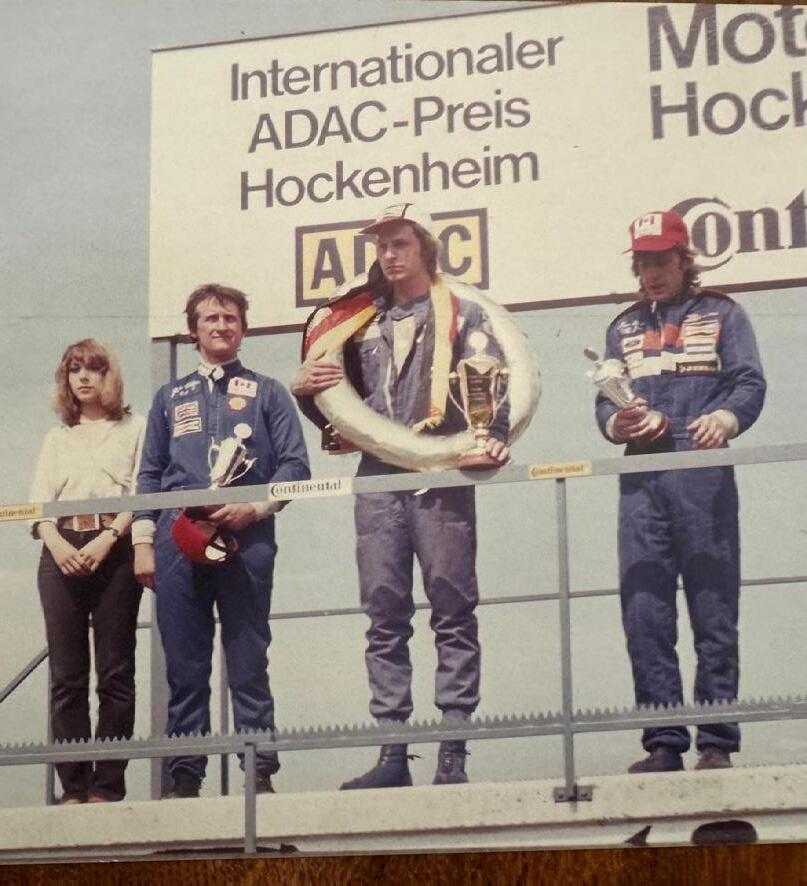
living spaces. Back on the farm in Norfolk, I have garages and barns storing my collection of around a dozen sports cars, including the odd Porsche and Ferrari, as well as about 10-12 classic replica bikes from the ‘70s. The beauty of the bikes is that they take up far less space than the cars, so it’s a good excuse to add to my collection!
If you could choose any car in the world to drive, what would it be and where would you love to drive it?
• Sadly, we did own this car but my family sold it back in the late ‘90s – it was a 250 GTO Ferrari. I’d absolutely love to drive that car to Monaco along the Cote d’Azur in the South of France.
Through your father and your career you must have met some inspiring and interesting people - does anyone stand out for you and why?
• Through my father’s association with the racing fraternity and my own career that took me all around the world’s racing tracks, I’ve been fortunate to meet some of the greatest drivers of all time. At home in Norfolk, we’d regularly have racing legends like Jim Clark and Graham Hill staying on the farm.
Back in 1981, I drove the EJR (Eddie Jordan Racing) Ralt-Toyota in the 1981 British Formula 3 series and in my first race, qualified on pole and finished second. The next year, Jordan ran cars in both British and European F3 (winning a race in Europe) and that year also gave a young, unknown Brazilian driver his first taste of F3. That driver was Ayrton Senna. For me, Ayrton was a friend and the most gifted racing driver I’ve met. I fondly recall sharing a few racing tips with him back then!
I also met the American actor Paul Newman many times. I remember him giving me a lift from Le Mans to the airport when I had to get to the Nürburgring. He was a wonderful personality and a supporter of underprivileged children. I recall he agreed the first sponsorship deal for his sauces enterprise with McDonalds, and he donated $500 million to US bootcamps created for deprived city children.
piece of advice your father ‘Gentleman Jack’ gave you?
• Throughout his life, my father and I shared a wonderful competitiveness in our respective racing careers. At different times, we both raced at Le Mans and in 1963, I co-drove a Ferrari 330 LMB with Mike Salmon to a fifth place in the 1963
Le Mans 24 Hours. In 1990, I topped that and finished third at Le Mans in a Porsche 962 with Tiff Needell and Anthony Reid. I still remember my father’s words: “never give up and always believe in yourself”, and they still hold true to this day.
You have launched an exciting innovative electric car - can you tell us about Move International?
• I’m really excited about our range of CityCars and bringing them to the busy streets of central London. They are the smallest, most versatile electric vehicles around, with a top speed of 30mph. They are crash-tested and approved for head-on collisions, while including all the necessities such as air conditioning, sat nav and reversing aids. They’ve already been running in Holland for three years, and so far, not a single owner has made a warranty claim. In fact, just last month, 25 were sold in Amsterdam. These are funky, fun, but incredibly practical cars, available in multiple colours and designs, ideal for anyone in the family. Whether you park sideways or headon, it’s a doddle fitting them into the tiniest spaces in central London.
For further information about Move International: www.moveinternational.co.uk

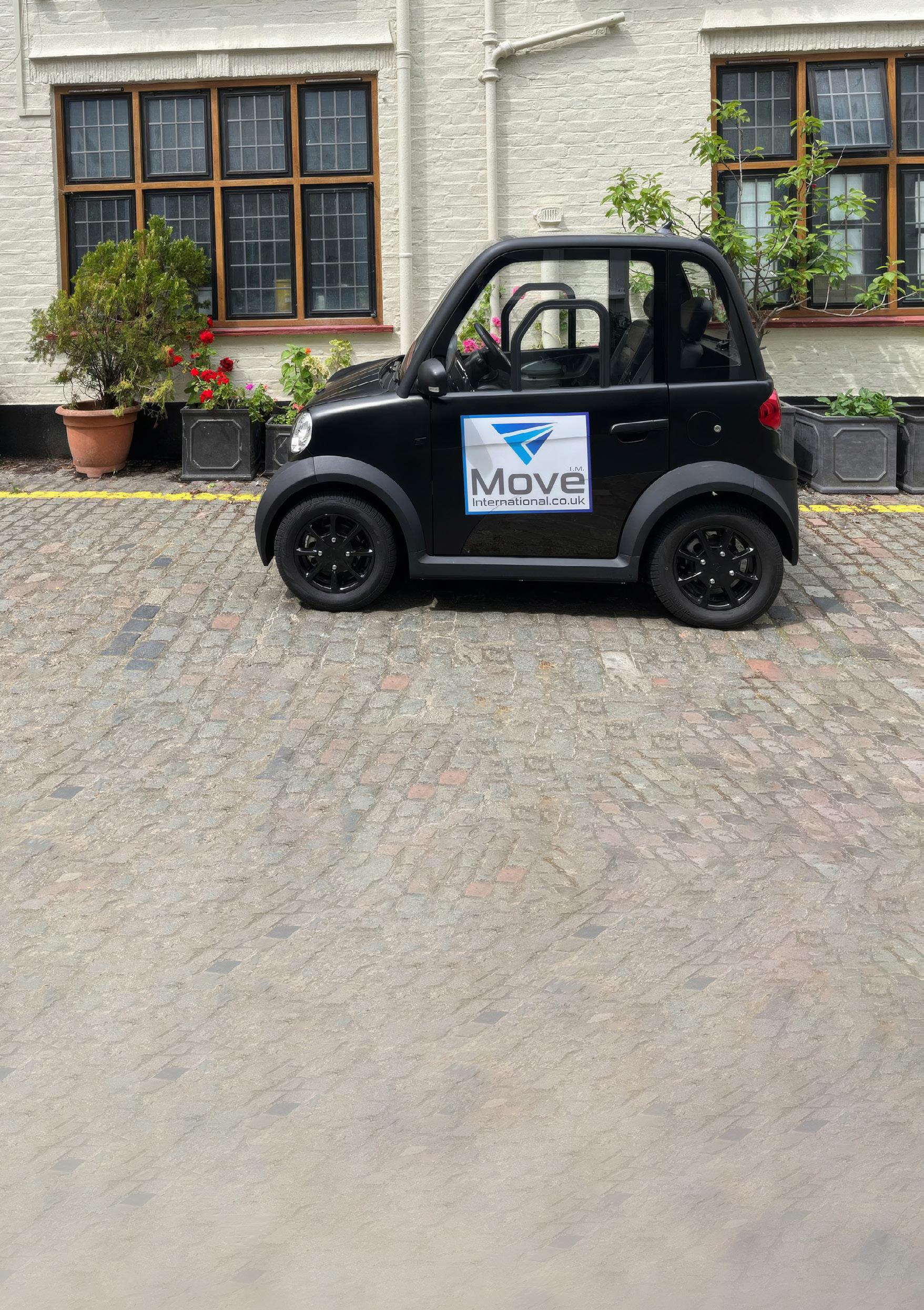

David won two British Formula Ford Championships in 1979 and then raced in Formula 3 against Nigel Mansell and Stefan Johansson with much success. Sears was asked to test for Lotus in Formula One but ultimately Nigel Mansell got the drive and Sears switched to racing touring cars for Ford, Toyota and Jaguar in the European Touring Car Championship. He then raced for Toyota in Japan in Group C and Pontiac in the USA. In 1989 Sears raced for Aston Martin in the World Sports Car Championship and Le Mans and in 1990, Sears finished third at Le Mans in a Porsche 962 with Tiff Needell and Anthony Reid.
Sears founded his own racing team in 1987, and in 1992, he stepped away from competing to focus on managing the team and other business ventures. His racing teams under David Sears Motorsport and Super Nova have won 16 Championships in 26 years and produced more than 20 Formula One drivers.
David Sears helped Nova Group in Japan develop their language school business to be placed on the Tokyo Stock Exchange. He has also been involved as a director of a mining company in West Africa and helped create the MQ Corporation in the US and UK to launch Solar Liquid Power as a new form of green energy.

Emily Nagioff Head
of Marketing emily@lurotbrand.co.uk
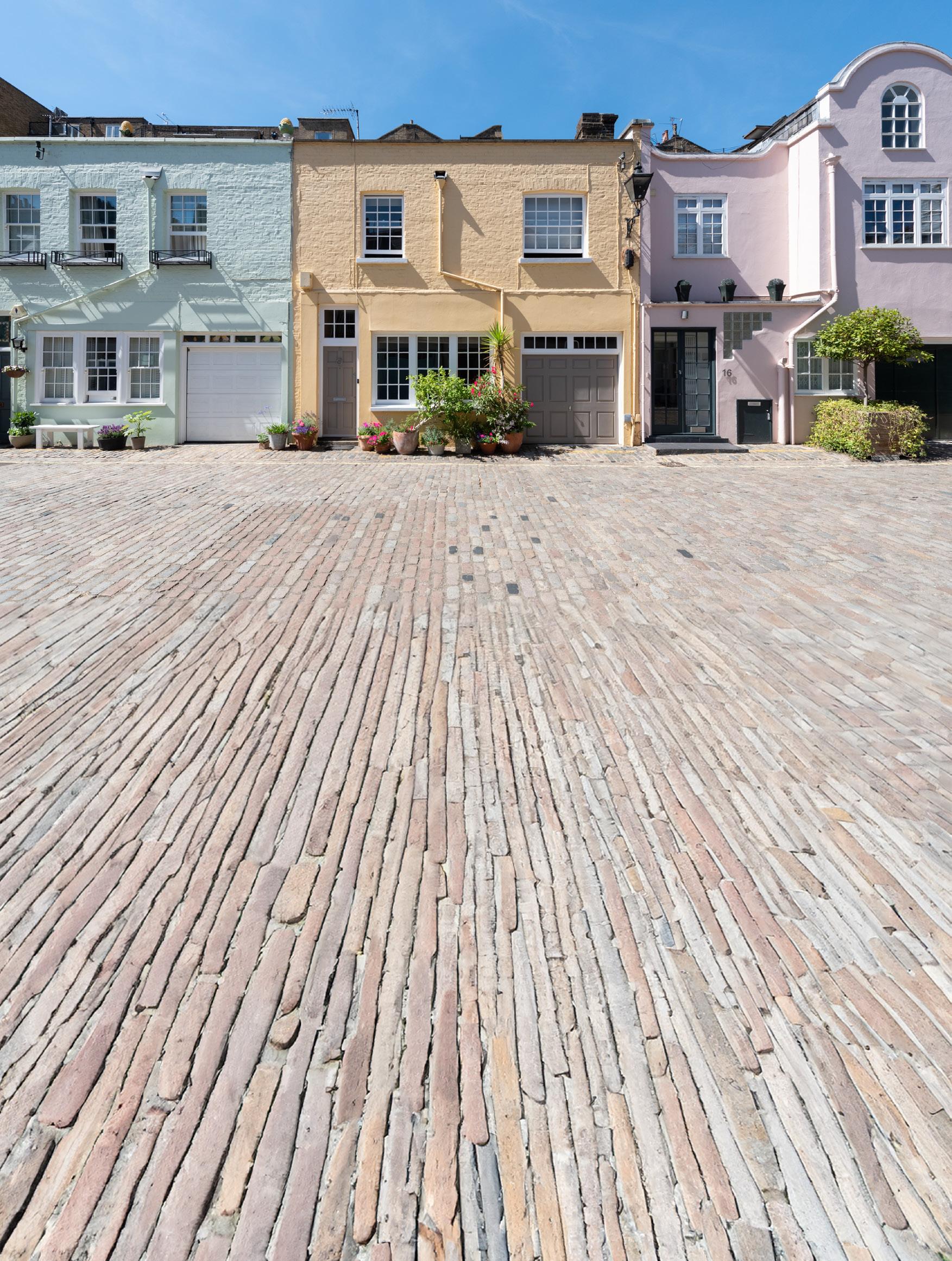
You joined Lurot Brand in February, what were your first impressions of joining such an established estate agency?
• For me, there was something very special and exciting about joining Lurot Brand because of their longevity in the industry and specific focus on mews houses. This isn’t just an estate agency; this company has decades of family history and a passion for selling, renting and managing some of the most unique and beautiful houses in London. Finding out that Antoine - who founded the company - went around London taking photos of every mews street was a revelation. Looking through the archives of those images and appreciating the history of so many mews feels like a privilege, and I see my role as both a curator, creator and communicator of mews content.
• As Head of Marketing, I’m responsible for everything that includes design, branding, and content. My starting point has been rebranding our social media and messaging. We’re fortunate to have rich mews content to post across our social platforms and I’ve been keen to showcase all the beautiful homes we’re either selling, renting or managing – as well as those we’ve recently sold or let – in an engaging way. I write blogs for the website, assist with videography, coordinate content for our quarterly magazine Mews News, design flyers, postcards, business cards and coordinate with external design teams to ensure our advertorials in publications read well and look good.
What are your primary objectives and goals for marketing this year?
• Well, I’ve got quite a few goals I’d like to see come into fruition before the end of 2024! Firstly, I’m keen to continue building our social media presence. Visuals are key, so mews streets and Instagram are the perfect match. Secondly, I want to create more video content, spreading the word about the beauty of mews streets and houses. We’re currently in the middle of working on some exciting projects so keep an eye out! I’ve also scheduled a lot more content for our quarterly Mews News magazine - featuring interviews from our wonderful staff, clients, and mews-based local business owners.
What is the thing that you love most about mews houses?
• Too many to mention because they’re all incredibly unique, both inside and out. I’ve never (at least not yet!) seen a mews houses that looks the same. I love that they may seem unassuming from their exteriors, but behind the front door they are full of surprises with amazing interior design and different configurations. They’ve come such a long way since starting off as humble stable accommodation dating back to the 18th and 19th centuries.
I also really like the mews streets where the houses are located. Although I haven’t always been a fan of London and its grey buildings, it’s refreshing to sometimes forget I’m in the city and enjoy the peaceful, village-like ambiance these streets provide.
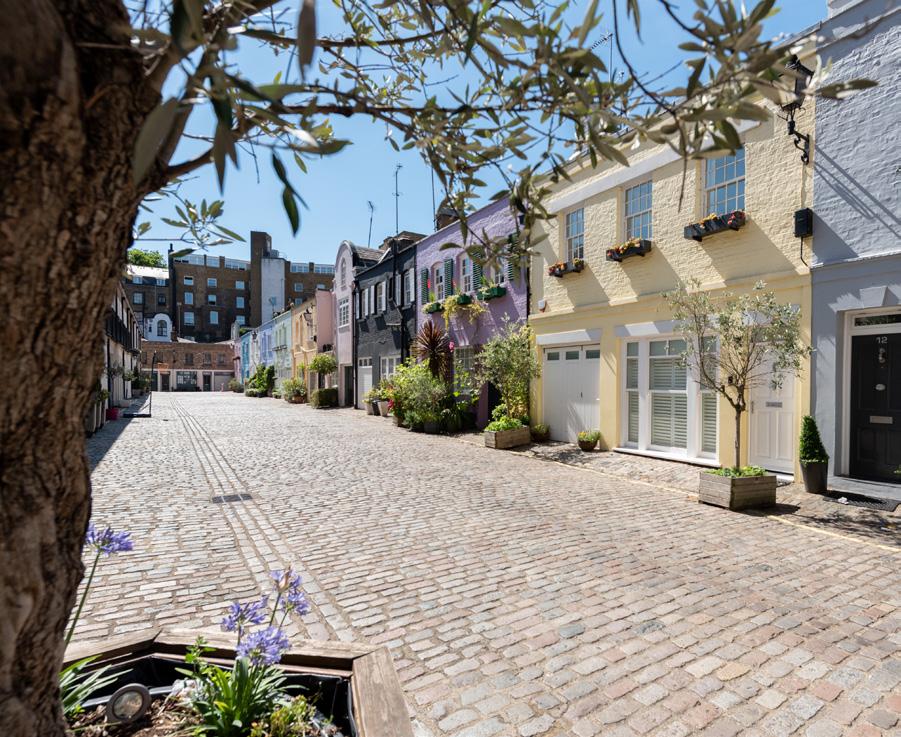

Is there a person past or present who influences your creativity and inspires you when working?
• It has to be the English journalist and writer Bryony Gordon, who has written openly about addiction and her mental health. She writes in an extremely personal way, yet it’s accessible and there’s an element of humour that makes her books quite hard to put down. She was one of the first writers who inspired and showed me how to write from a personal perspective; how to connect to an audience by expressing myself in a way they can relate to.
Where is your favourite place for coffee and lunch near the office?
• I prefer independent cafés to bigger chains and Café Society is one of my favourites, with a small outside place to sip great coffee and people watch. Coco Momo is handy for our office and is a fab place for lunch with great ambience and the best gluten-free fish and chips!
• I’m blessed to work with this team. As colleagues we share the same values and are supportive of each other. We work hard and we can all share a joke. No one is afraid to ask a question or listen to another person’s idea or opinion and we respect and learn from each other. The office has a friendly energy and as a unit, we share a commitment to looking after our clients and all adore everything about mews. It’s refreshing post-pandemic to feel connected to people you work with and I enjoy socialising with them outside of the office. They’re a great bunch!
LB’S DOORSTEP GUIDE TO
Our own Jonty Hall shares some inside information about where to go, what to do and why he would describe Notting Hill as ‘classy, colourful & full of character’
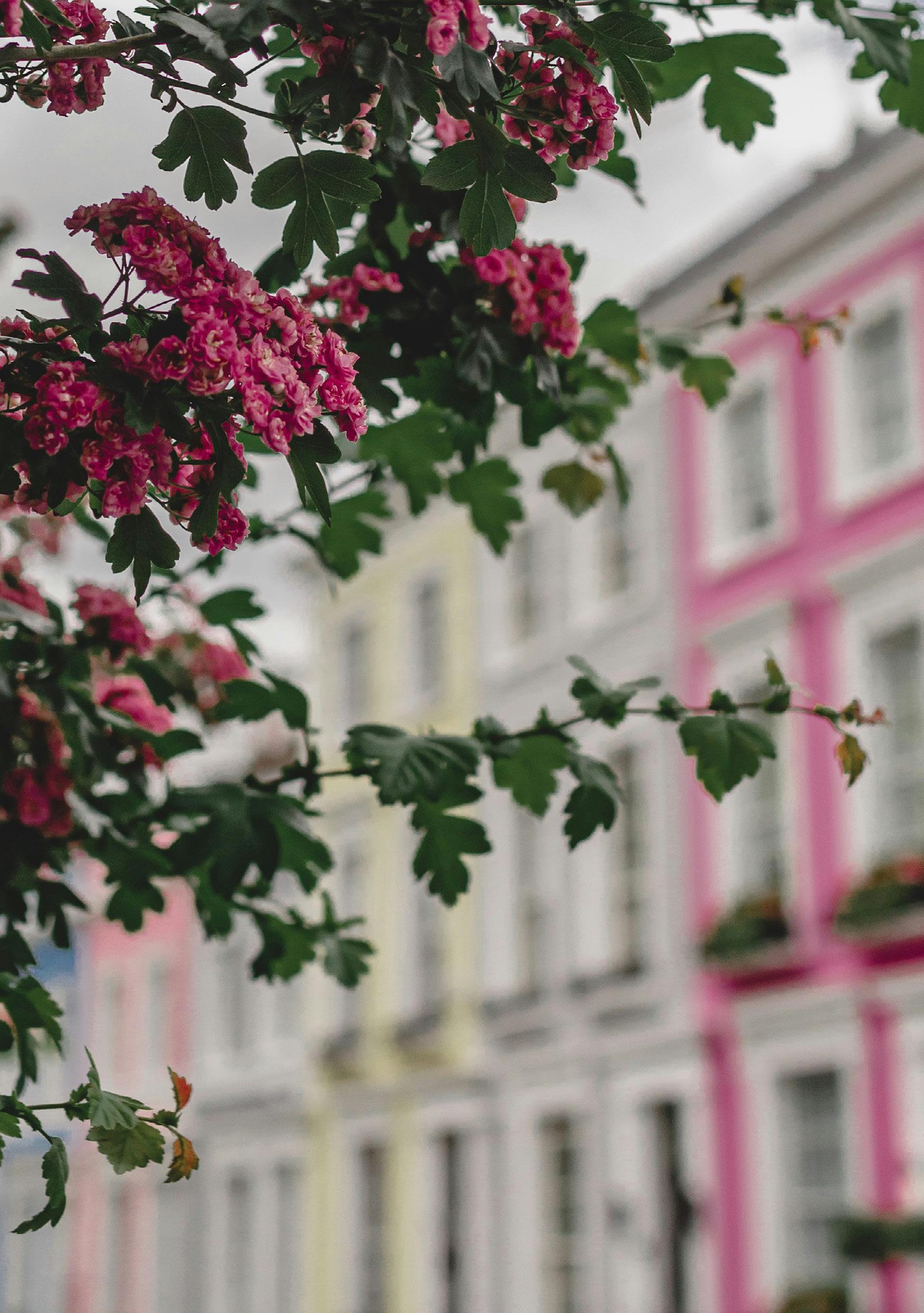

Living in Notting Hill comes down to a lifestyle choice. If you crave a part of London that’s full of cultural richness, alive with a creative community and happens to also be one of the most aesthetically pleasing neighbourhoods in London- then this is where it’s at.
The atmosphere of Notting Hill is charming, and there always seems to be something to do on the weekend, whether that’s visiting the array of independent cafés and restaurants, spending time exploring Portobello Market, or experiencing the famous Notting Hill Carnival in August. It’s no wonder that visitors to this district often extend their stay and simply never leave.
Some of London’s most desirable streets can be found in Notting Hill and I recommend exploring them on a summer weekend. Leafy Pembridge Mews, with its original Victorian street lanterns and pretty mews houses painted in muted pastels, is worth a visit, as is Colville Mews – one of the most sophisticated mews in the area with its cobbled street lined with gardens and wrought iron balconies adorned with touches of cascading wisteria.
There’s no denying that Notting Hill has character, which is why it’s been featured in rom-coms like ‘Notting Hill’ and ‘Love Actually’. Hugh Grant, who played William Thacker in ‘Notting Hill’
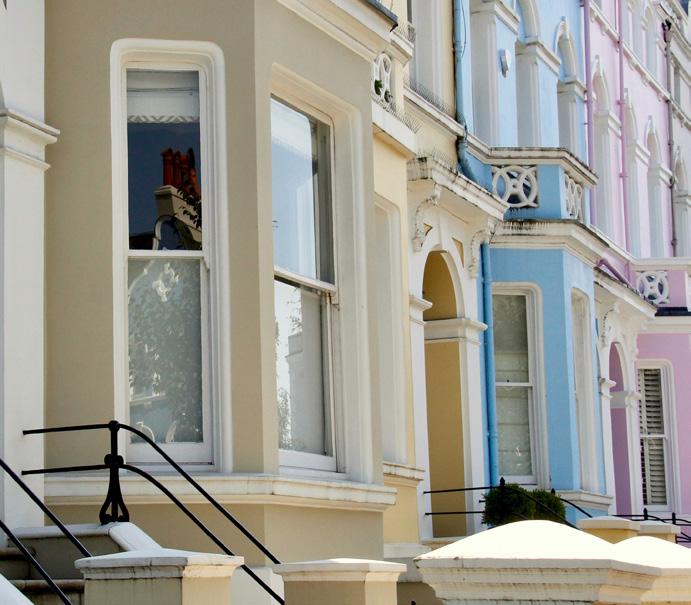
and lived at Westbourne Park Road in the film, was even a local resident for 20 years on Draycott Place.
If you head to The Notting Hill Bookshop, you’ll notice a blue plaque commemorating its role as the travel bookshop in the same film and while exploring the area, you might even spot some famous faces, as celebrities like Keira Knightley and Jennifer Lawrence own houses here.
Whether you’ve bought a house in Notting Hill or simply want to explore over the weekend, it’s a wonderful neighbourhood to roam. Pay a visit to Alice’s, a quaint store that sells an eclectic mix of antiques and curios, often spilling out onto the pavement, or Couverture & The Garbstore, which offers carefully crafted clothes and homeware collections in a three-storey townhouse.
For a healthy bite to eat, head to Farm Girl, located behind the old church on Portobello Road, or Daylesford Organic, set up by Lady Bamford to deliver fresh produce from her Cotswolds farm. The café walls are adorned with cross-sections of fallen trees from the estate, offering the freshest seasonal menus.
Notting Hill isn’t just a place to live; it’s a vibrant tapestry of culture, community, and timeless beauty. Whether you’re strolling through its picturesque streets, indulging in its diverse culinary offerings, or soaking up its rich history, there’s always something new to discover. For those seeking a neighbourhood that seamlessly blends sophistication with charm, Notting Hill remains an enduring choice.

Jonty Hall
Lettings Associate jonty@lurotbrand.co.uk 020 7479 1971

1.
A boutique health club, located in Lambton Place, Notting Hill. We love its 18m pool, steam room and jacuzzi, along with a stateof-the-art gym, and over 70 weekly classes across three studios, including Reformer Pilates and Indoor Cycling. The relaxing Members lounge is great to relax post-workout and enjoy a fresh juice or coffee.
www.bodyworkswest.co.uk

2.
This rustic Italian restaurant on the corner of Kensington Park Mews transports you to the streets of Florence and has been feeding local residents since 1992. Its menu is based on home-cooking with fresh ingredients, full of flavour. The staff are always welcoming and the vibrant atmosphere inside and out with extra tables on the pavement is perfect for summer dining.
www.osteriabasilico.co.uk

Located on the corner of Denbigh Close, Alice’s started off life as a rag-andbone merchant in 1887. Today, it’s a Notting Hill institution and landmark on the Portobello Roadan emporium offering an ever-changing eclectic choice of vintage and antique furniture, curios, china and much more.
Follow @alicesportobello on Instagram
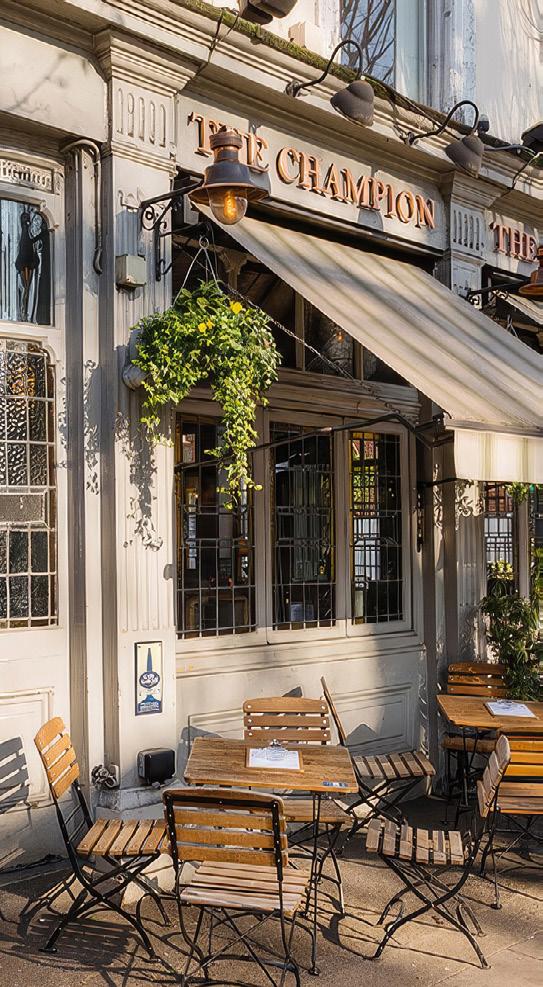
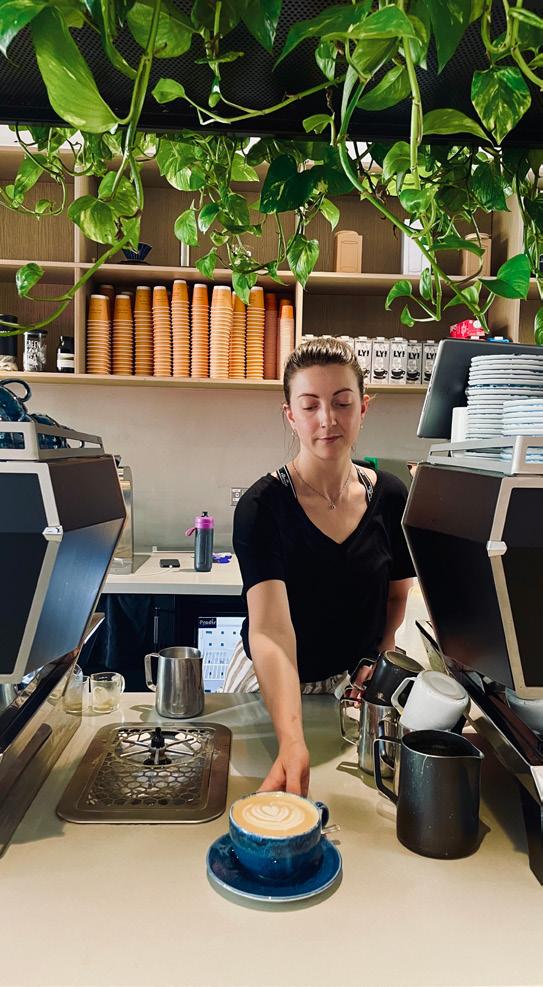
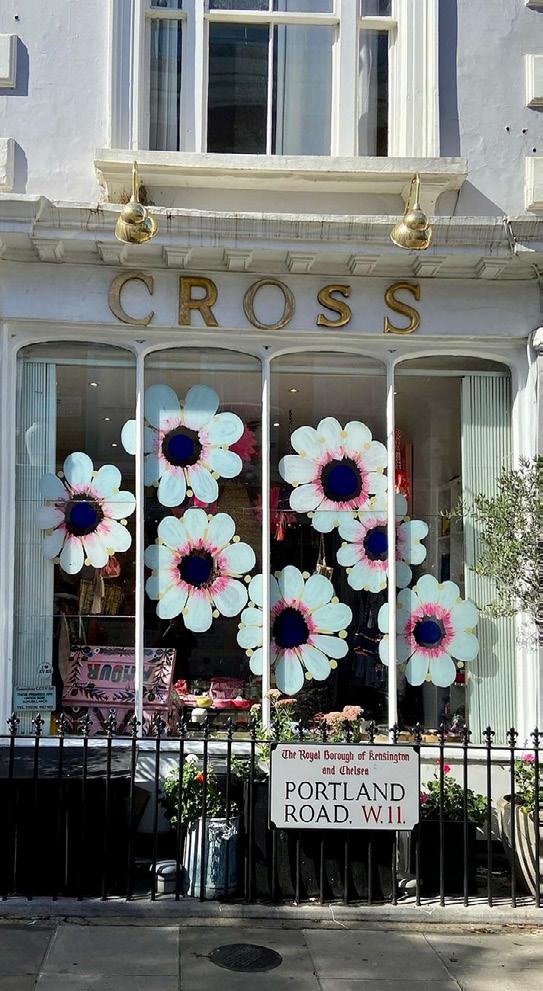
@thecrossshop
www.instagram.com
CHAMPION PUB
This is a lovely local pub, close to Victoria Grove Mews with a welcoming ambience. It boasts a vast drinks selection, including traditional beer and ales, as well as a menu full of flavoursome dishes for a relaxed lunch or informal dinner.
www.thechampionpub.co.uk NOTTING HILL COFFEE PROJECT
Serious about coffee, community, and sustainability, this café boasts an in-house roastery, so you can expect unique flavours and exceptional coffee every time. Locals can often be seen here as part of their daily morning ritual, making it the perfect spot to spend a weekend morning either solo with a book or catching up with friends.
www.nottinghillcoffeeproject.com
As one of London’s first lifestyle boutiques, The Cross opened its doors in 1996 and has been welcoming shoppers ever since. This exquisite store offers a curated selection of homeware, womenswear, accessories, and beautifully crafted pieces, making it perfect for finding gifts for yourself or others.
www.thecrossshop.com
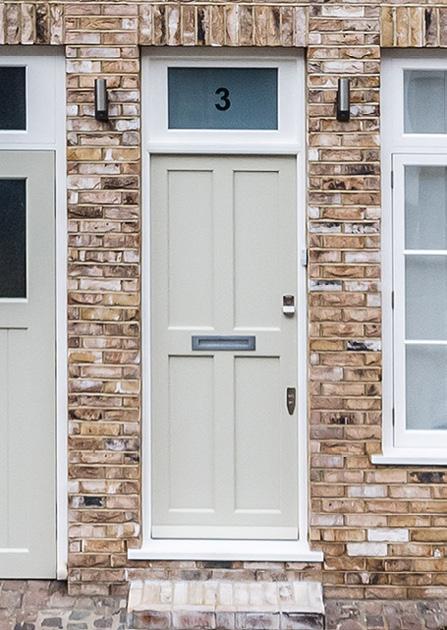
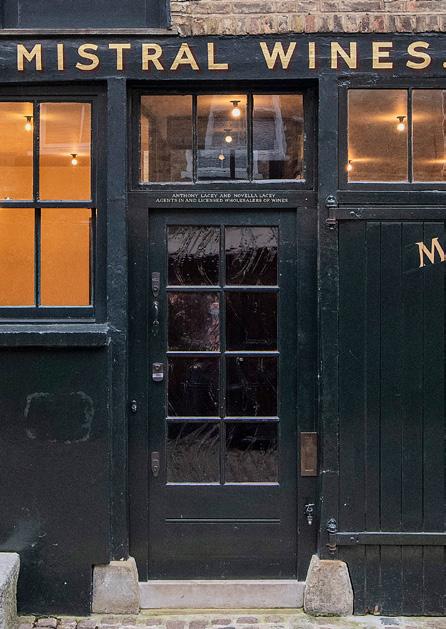
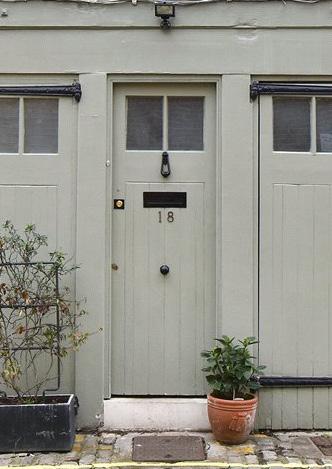
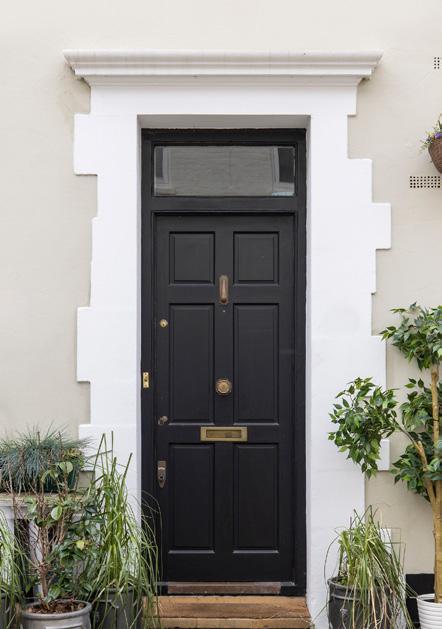
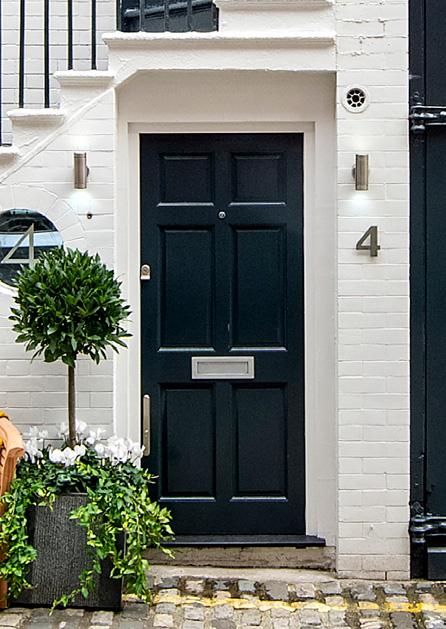
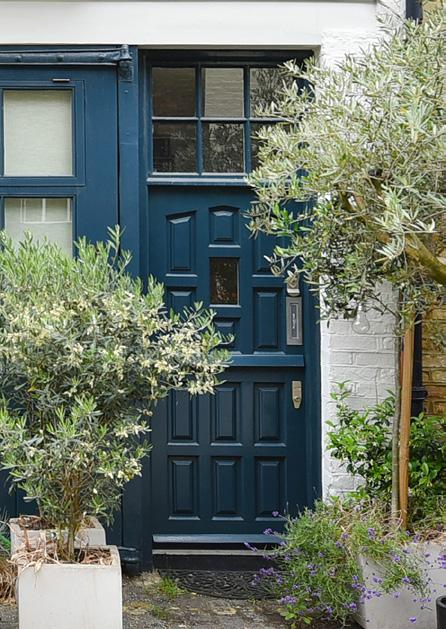
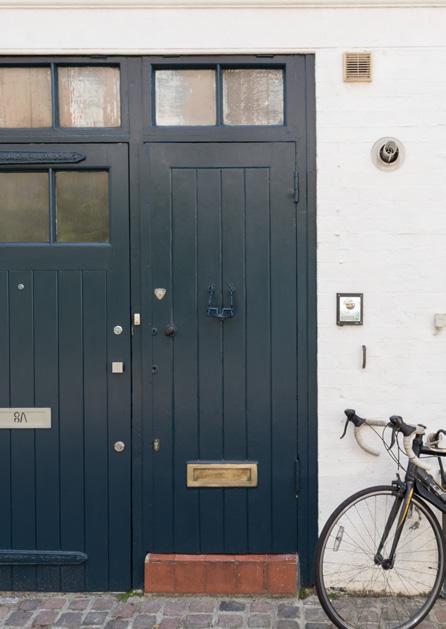
Over the years, we’ve heard numerous heartwarming stories from residents in the mews that we’d love to share with the community.
If you have a story or an event related to the mews that you’d like to contribute, we’d love to hear from you. Contact us with your mews news!
marketing@lurotbrand.co.uk 020 7590 2528
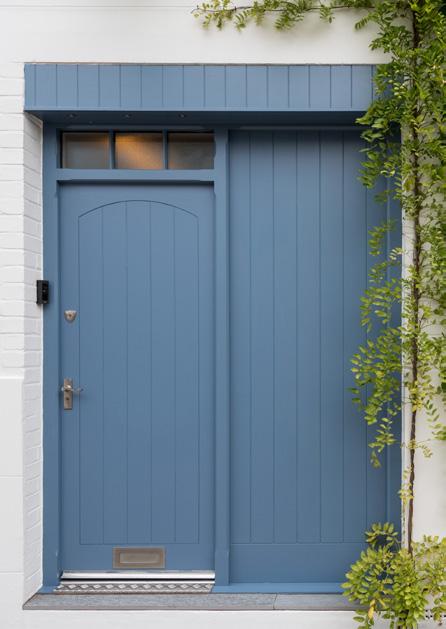
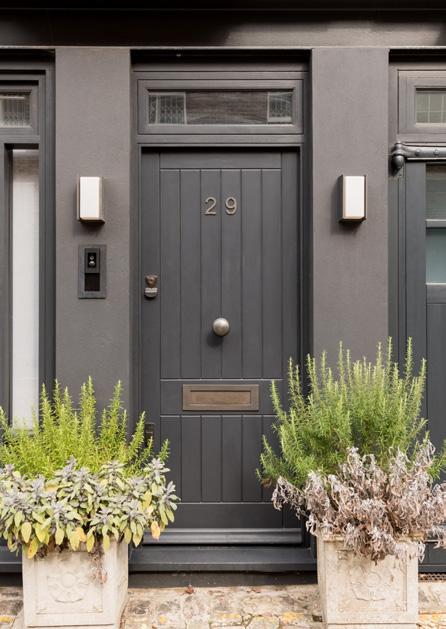

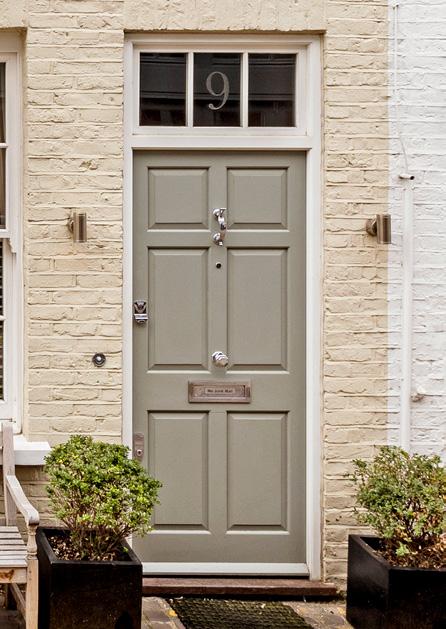
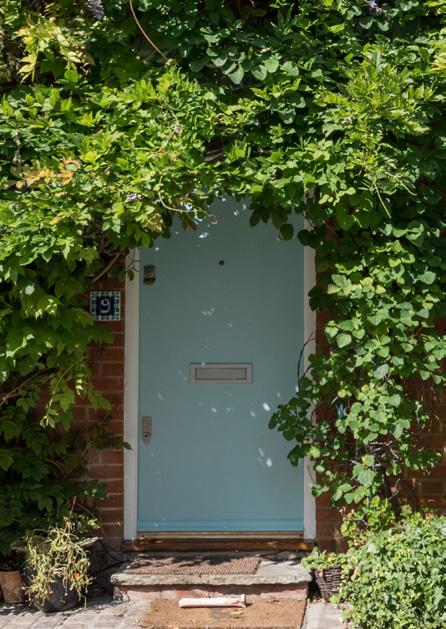
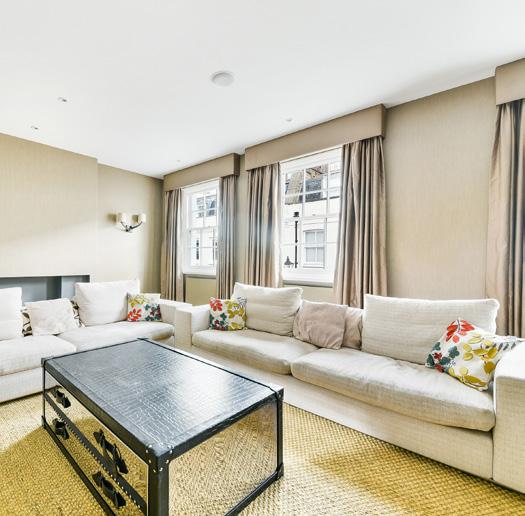

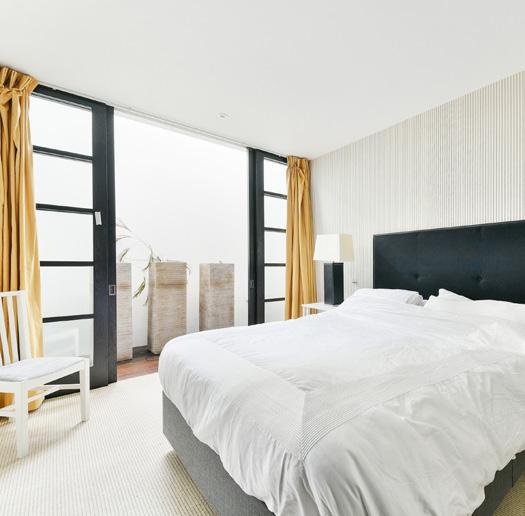
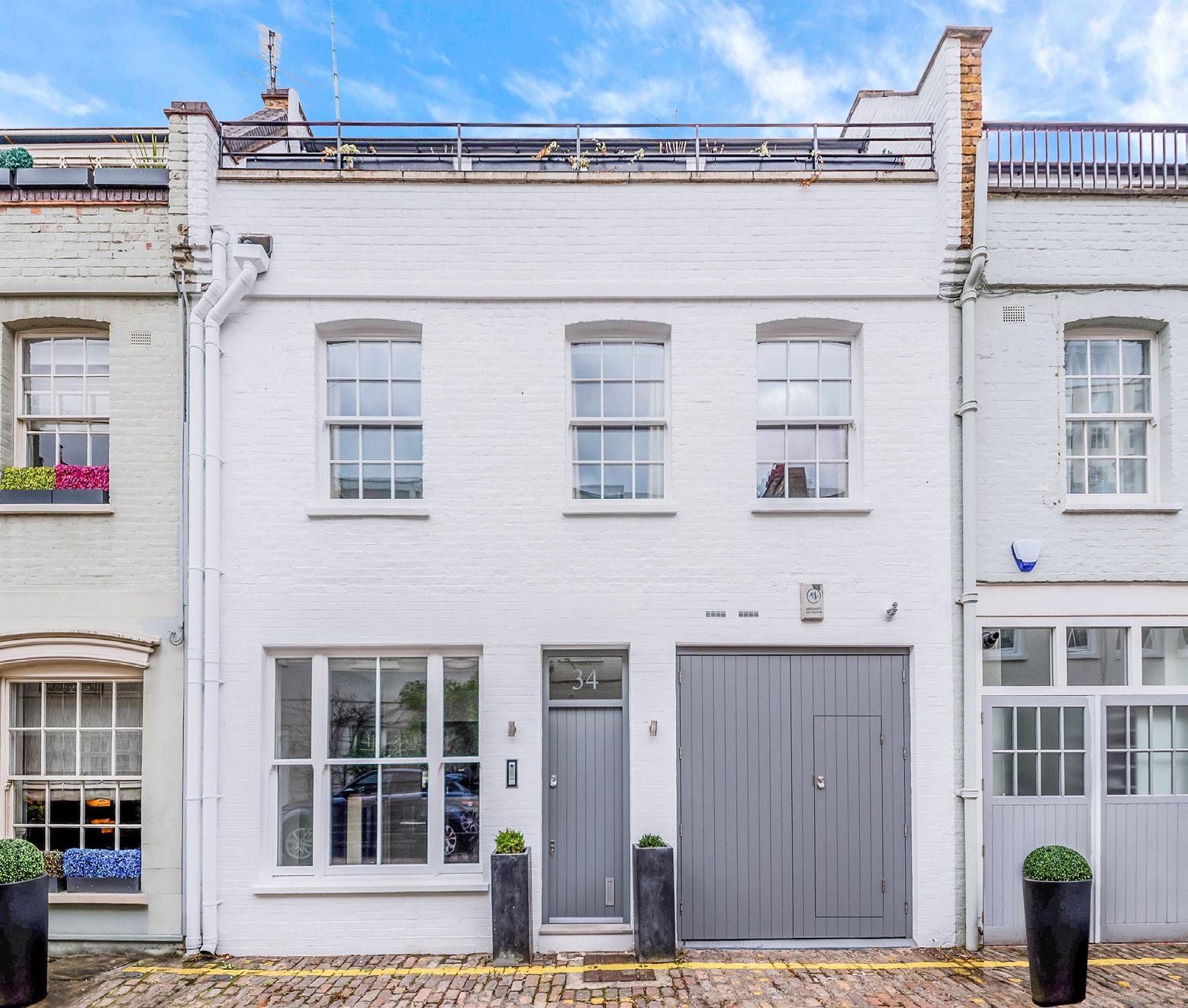
• 3 Bedrooms
• 3 Bathrooms
• 1 Reception Room • Balcony • Freehold • 2,025 sq.ft.
£3,350,000
£1,850,000
• 3 Bedrooms
• 2 Bathrooms
• 1 Reception Room
• Freehold
• 1,141 sq.ft.


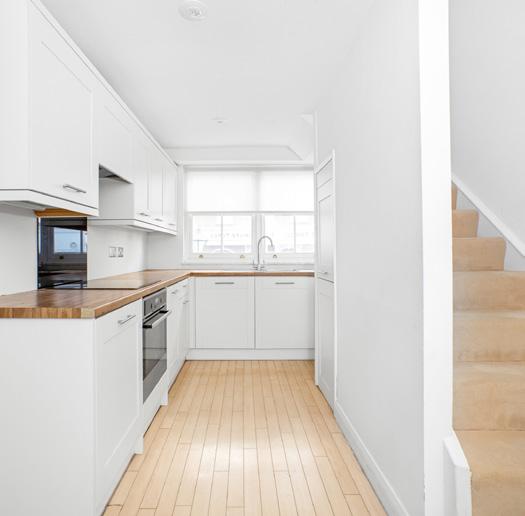

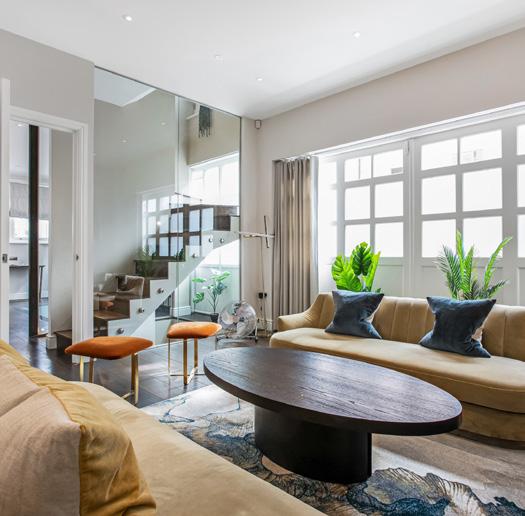
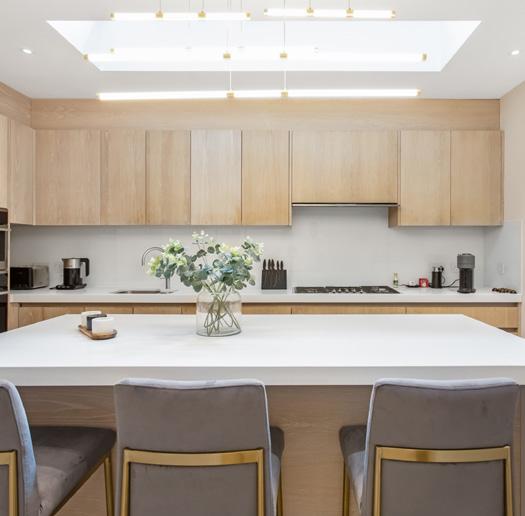
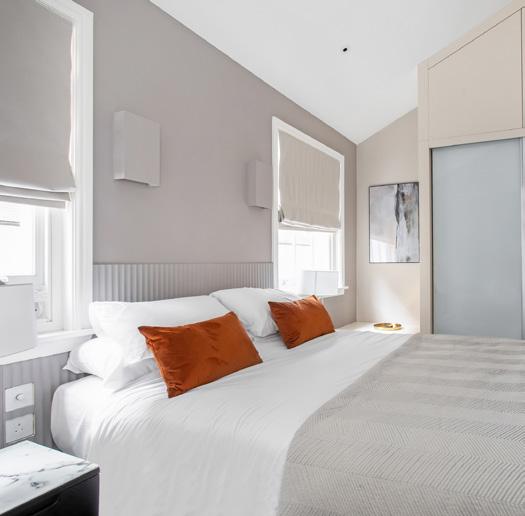

£1,100,000
• 3 Bedrooms
• 2 Bathrooms
• 1 Reception Room
• Balcony
• Freehold
• 1,116 sq.ft.

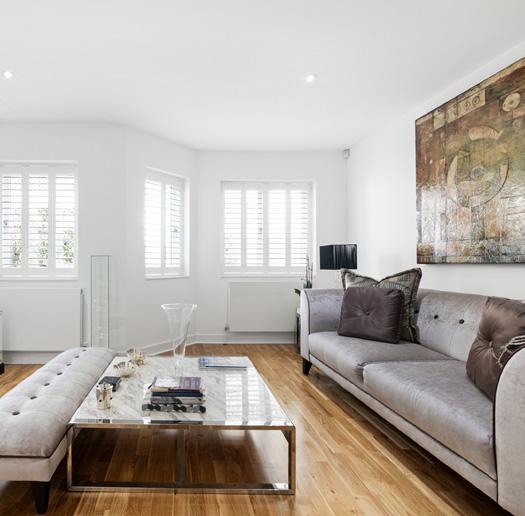


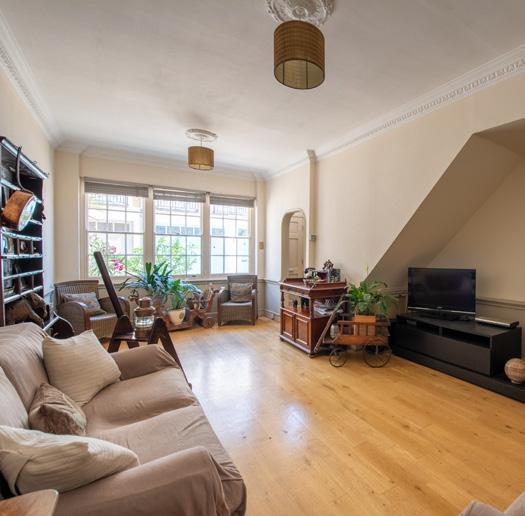
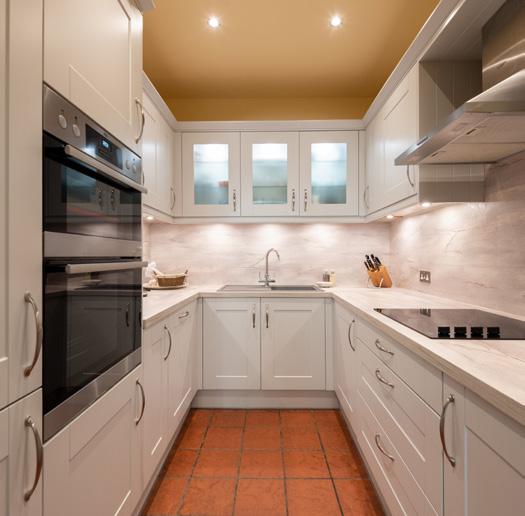
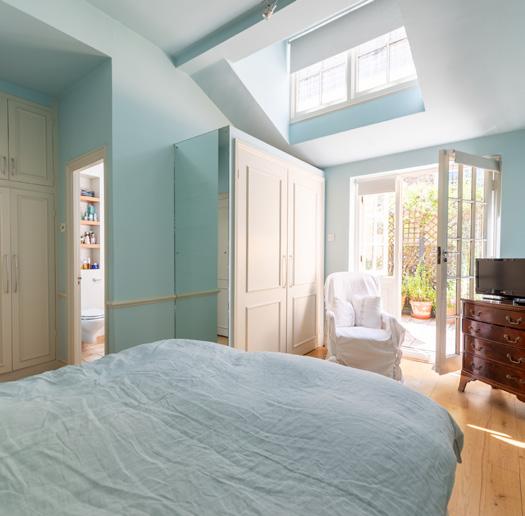
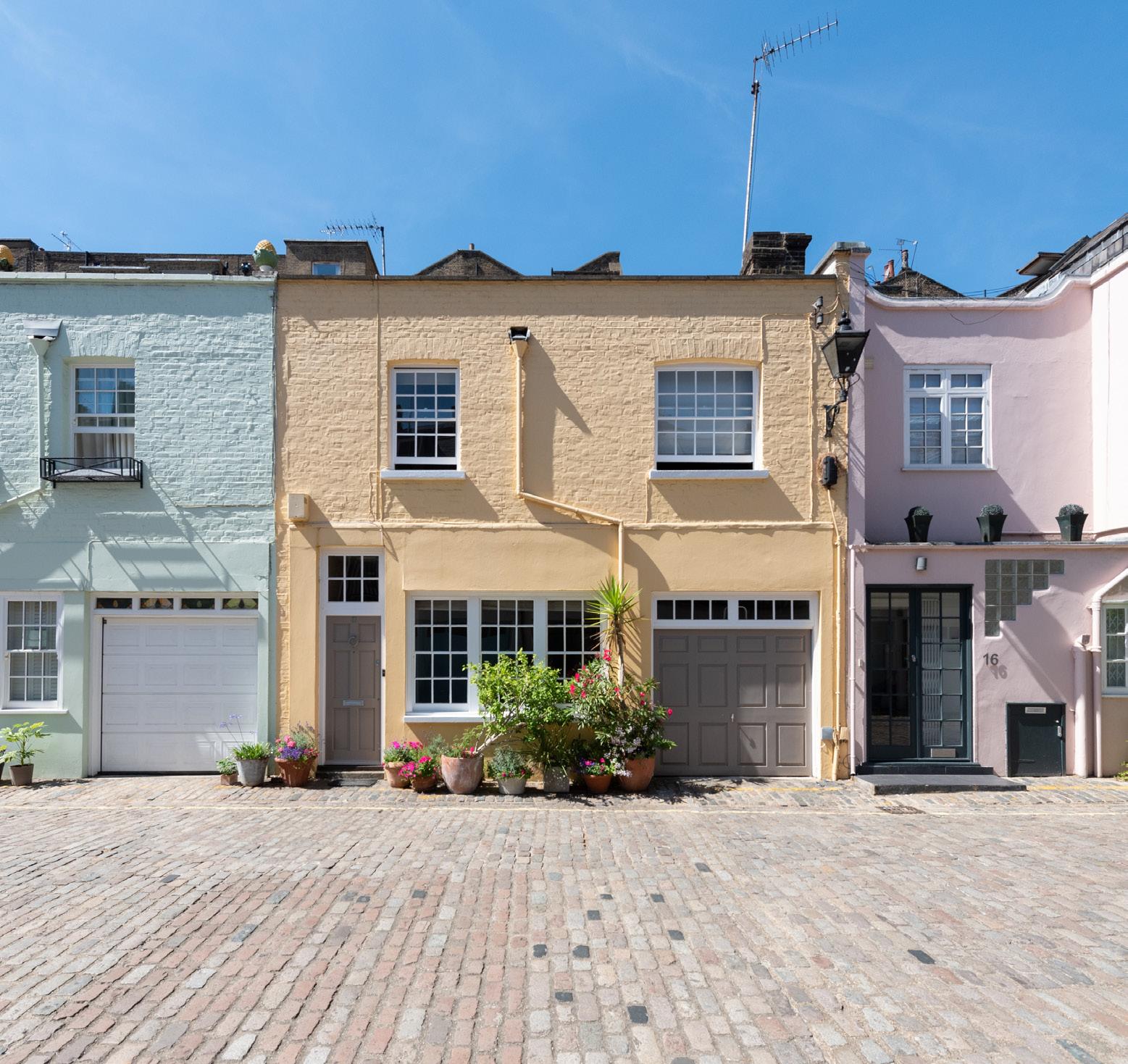
• 3 Bedrooms
• 2 Bathrooms
• 1 Reception Room
• 1 Dining Room
• Roof Terrace
• Garage
• Freehold
• 1,419 sq.ft.
£2,400,000
£1,250,000
• 2 Bedrooms
• 2 Bathrooms
• 1 Reception Room
• Roof Terrace
• Freehold
• 879 sq.ft.
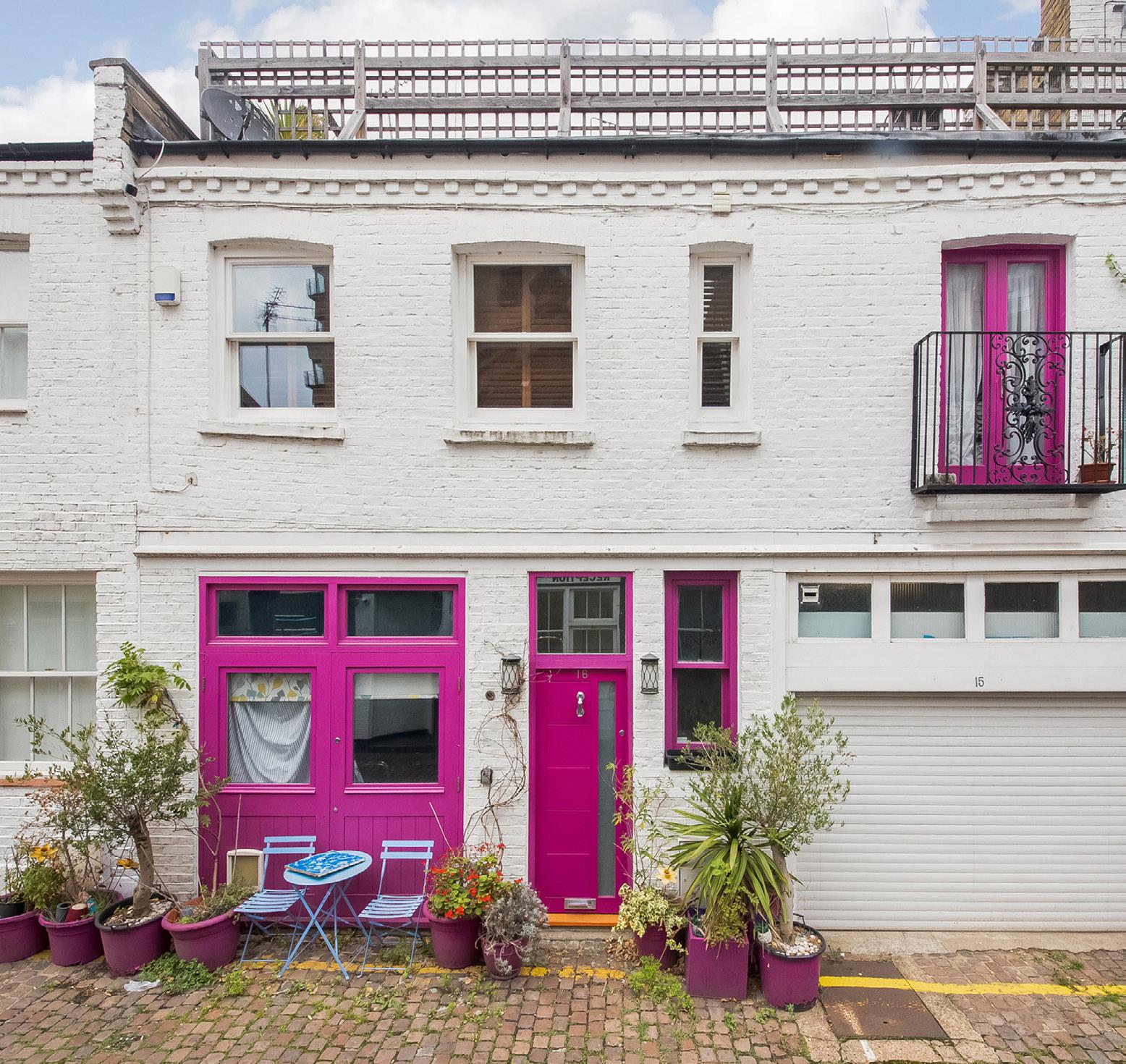
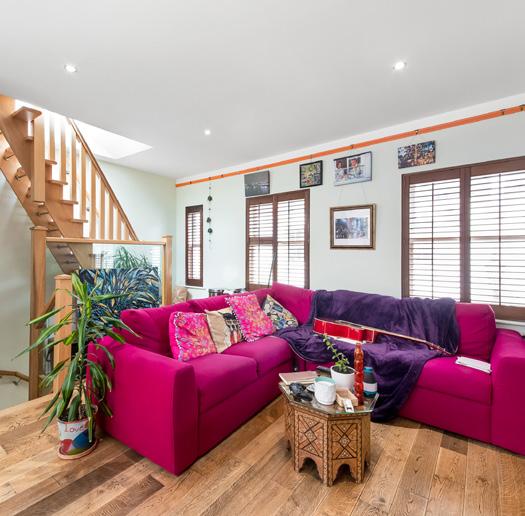
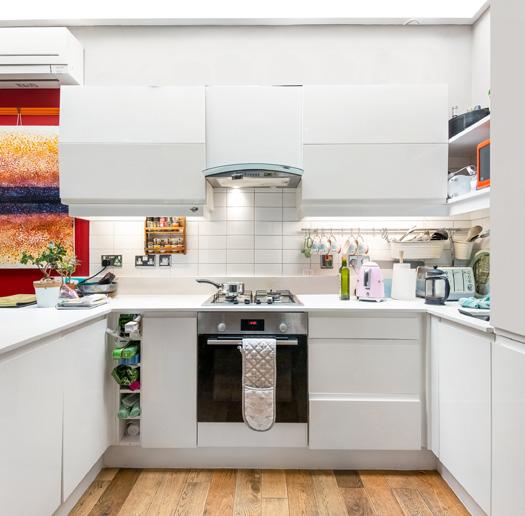

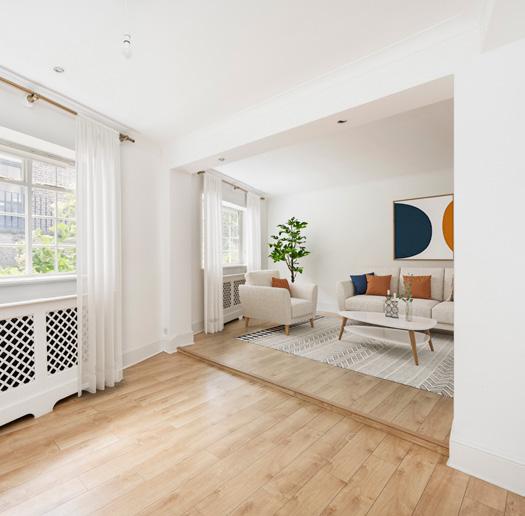
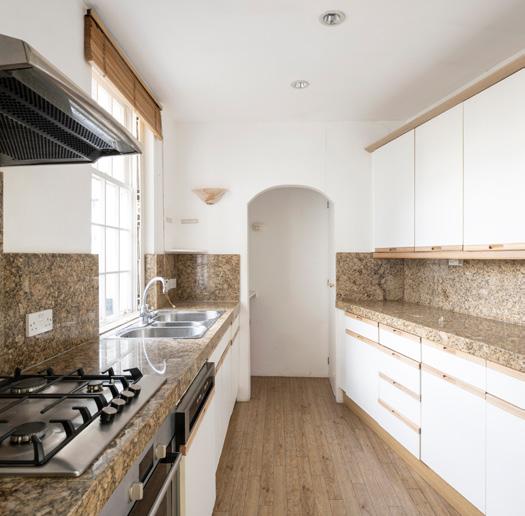
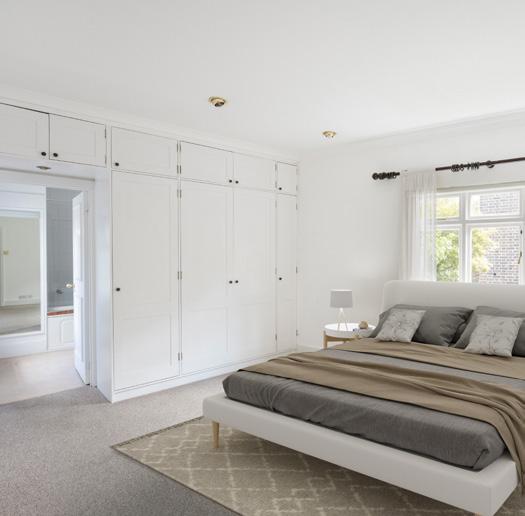

• 4 Bedrooms
• 4 Bathrooms
£3,750,000
• 1 Reception Room
• 1 Dining Room
• Roof Terrace
• Garage
• Freehold
• 2,200 sq.ft.
£1,350 pw
• 3 Bedrooms
• 2 Bathrooms
• 2 Reception Rooms
• Garage
• Long Let
• 1,487 sq.ft.
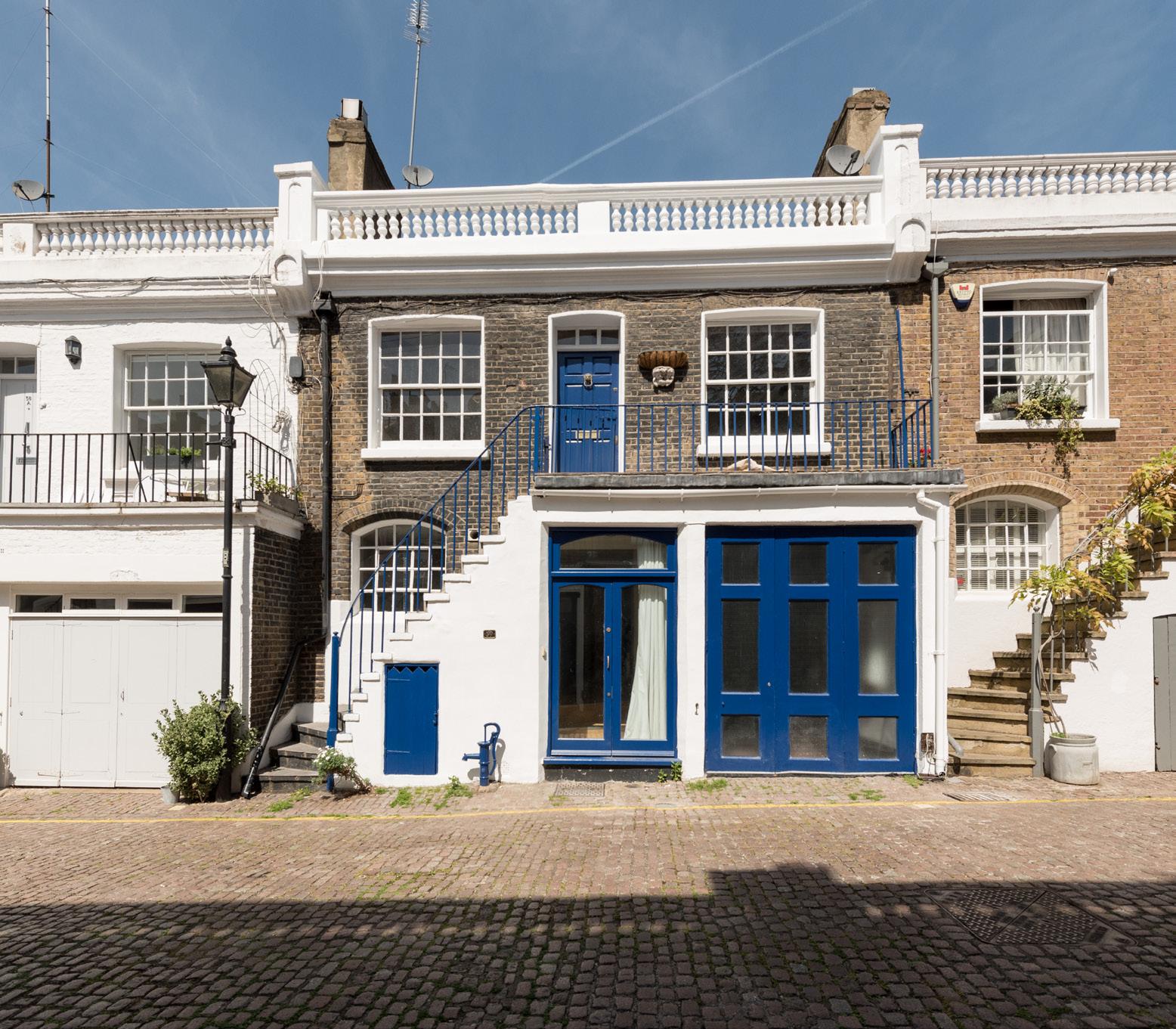
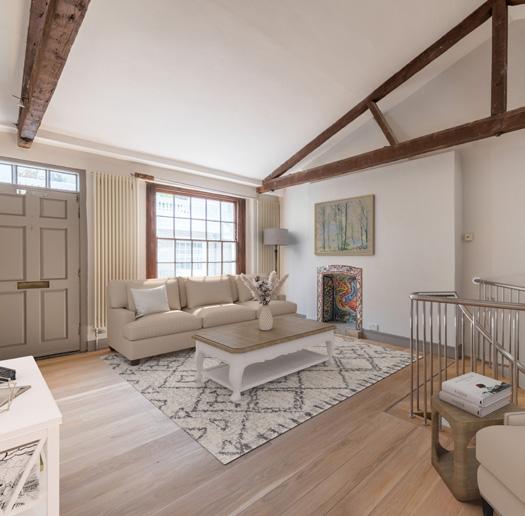
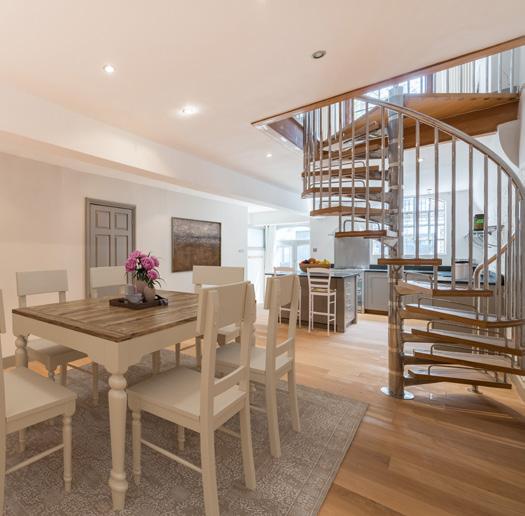
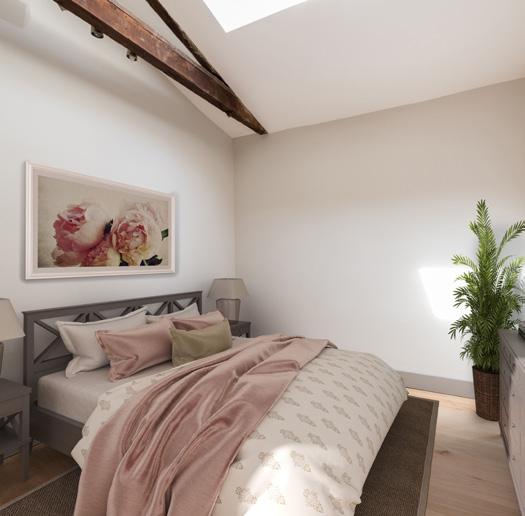
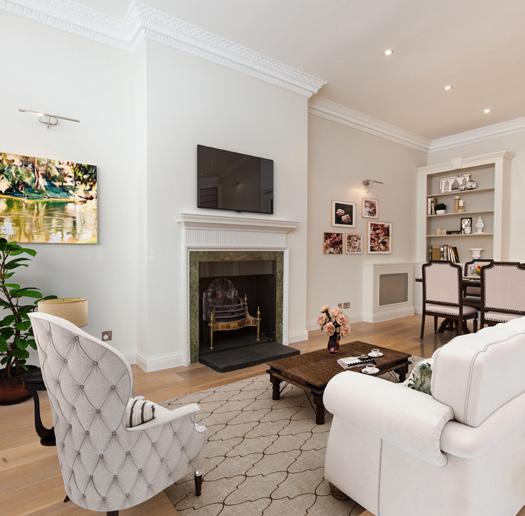

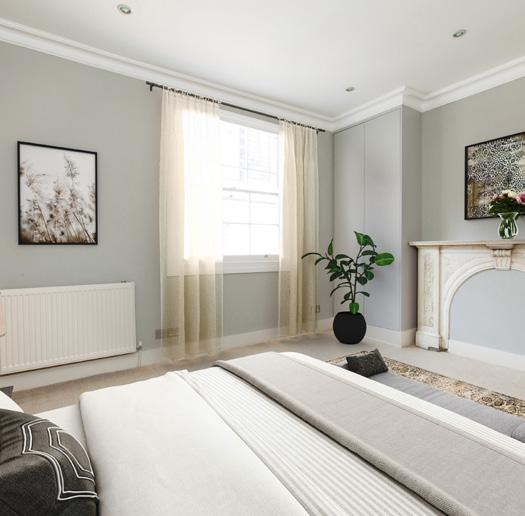

• 5 Bedrooms
• 3 Bathrooms
• 1 Reception Room
• Garage
• Long Let
• 1,872 sq.ft.
£923.07 pw
• 2 Bedrooms
• 2 Bathrooms
• 2 Reception Rooms
• Patio
• Long Let
• 1,112 sq.ft.

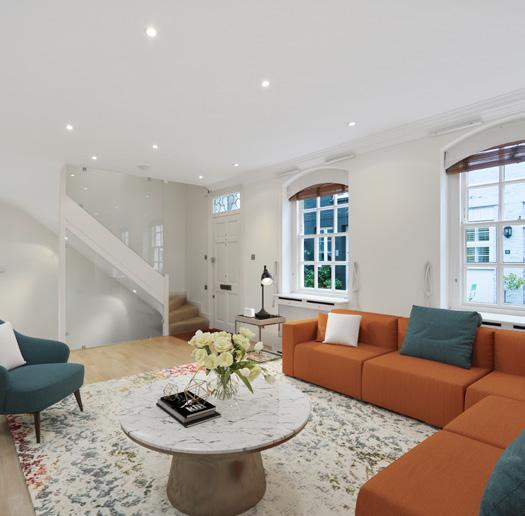
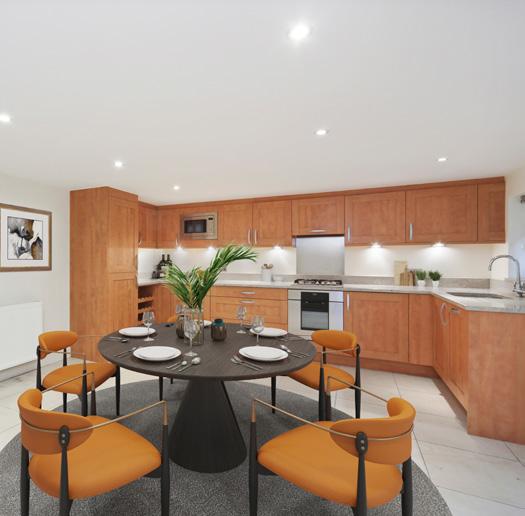
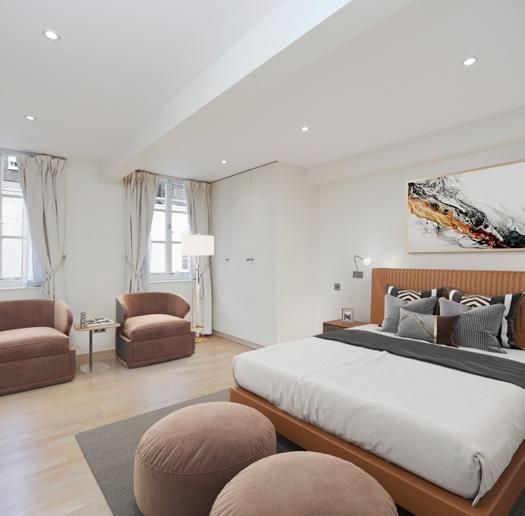

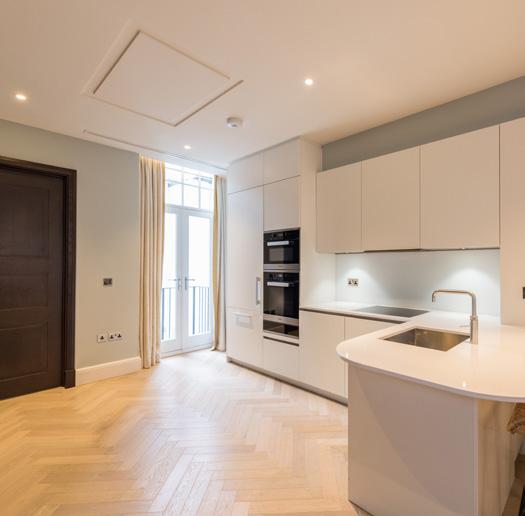
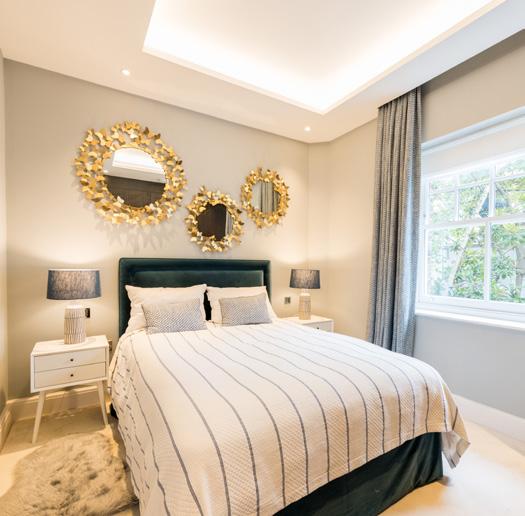

SW3
• 3 Bedrooms
• 3 Bathrooms
• 1 Reception Room
• Patio
£3,000 pw
• Lift
• Long Let
• 2,092 sq.ft.
£1,384.62 pw
• 3 Bedrooms
• 3 Bathrooms
• 1 Reception Room
• Patio
• Garage
• Long Let
• 1,941 sq.ft.

